This review was provided for free, but Cit-E-Cycles supplied a temporary demo bike for me to test. My goal is to be transparent and unbiased with you, this video and writeup are not meant to be an endorsement of Specialized products. I welcome your corrections, additions, and feedback in the comments below, and the Specialized electric bike forums.
Observations:
- The Turbo Vado series of Specialized electric bikes dates back to 2017, and hasn’t changed much until this latest generation. The downtube used to be triangular, with a larger diameter towards the bottom. To me, this wasn’t the most attractive aesthetic, so it’s nice to see how they’ve improved it for 2022! The same battery pack design has been adopted for the Specialized Turbo Tero, and Turbo Como models. It’s easy to get a little lost with Specialized ebikes because they have a lightweight version of the Vado and Como that are called SL (which stands for Super Light). Those models use a MAHLE motor and non-removable downtube battery. They’re lighter, and less powerful than the standard Vado and Como, which use a Brose motor. I hope this helps you to navigate the offering :)
- Regarding the battery pack, there’s a lever that is used to push out or pull in snug when locking and unlocking. I did not experience any rattling during my test rides, and appreciate how the pack is connected to a cross bar inside the frame so it won’t just fall out when unlocked. I also like how short and light weight the pack is, considering that it offers such high capacity (over 710 watt hours). All of the electronics are highly water resistant with IPX6 rating, and the battery charger uses the Rosenberger EnergyBus magnetic plug interface that is less likely to break or pull the bike over if the wire gets snagged during charging.
- The Vado comes in three trim levels with 3.0 offering a smaller battery pack and weaker 50nm motor, the 4.0 stepping up to higher capacity battery and nicer specs along with a 70nm motor power, and the 5.0 offering the nicest drivetrain, brakes, suspension fork and highest power 90nm motor. There’s a mix of drivetrain offerings available now, with a Gates Carbon belt drive with Enviolo continuously variable transmission version of the 3.0 and a Gates Carbon belt drive with Enviolo Automatiq electronic auto-shifting CVT for those who are interested in a quieter, smoother, and simpler drivetrain… that also adds some weight. I enjoy how quick and responsive the traditional cassette is, and was very happy with the 4.0 model shown in this review.
- It’s important to register the bike with the Specialized Mission Control smartphone app to unlock the lifetime warranty on the frame and enhanced support, as well as locking ability. The app can be used to wirelessly unlock the bike over Bluetooth or set a numeric pin that can unlock the bike using the TCD2 LCD display that’s mounted to the handlebar. Most shops should help you get this all setup when you purchase and pick up the bike, unless you’re getting a click to collect at a non-specialized shop.
- The new Vado does a lot right, in my opinion, and is an excellent hybrid electric bike for people who want power and range with a more active body position than the Como (which is more of a cruiser). I love how the frame looks and appreciate the continued attention to detail with the fenders, rear rack, display panel, and variety of trim levels, colors, and sizes. I also admire the quality and depth of the Specialized Mission Control smartphone app.
Pros:
- The bike looks great and is above average in most ways… It rides solid and quiet even though it has fenders and a rear rack, the grips and saddle felt very good to me, I love the addition of a suspension seatpost stock, I appreciate the attention to detail with internally routed cables, reflective tires and stickers, and the plastic chainring guard, chain protector, double sided slap guard on the chain stay, the scuff guard stickers on the crank arms, the double bottle cage bosses, the direct mount eyelets on the suspension lowers for the front fender and more on the seat stays for a frame lock, the fact that it comes in a wide range of colors (across the three trim levels), two frame styles (high-step and step-through), and four frame sizes!
- The display panel, button pad, and smartphone app are some of the best I’ve seen. While there is some room for further improvement, I love that it shows battery percentage, has a built-in alarm (although it doesn’t alert you using a smartphone, just makes noise if the bike is shaken and won’t power up without the pin), provides walk assist (hold the + button), allows you to turn off the lights (hold the F1 button), and further refine the three levels of assist with micro tune (10% steps for each of the assist levels by pressing F2). I do wish that you could dim the display and turn off the beeps and haptic buzz within the display settings vs. having to use the smartphone app. I love that you can customize screens on the display, plan trips to ensure you don’t run the battery dry, maintain a set heart rate, and so much more with the Mission Control smartphone app on iOS or Android.
- Built into the right side of the TCD2 MasterMind display panel is a USB-C charging port that offers 5 volts and a full amp of power output to maintain a smartphone or other portable electronic device! Way to go Specialized, this is very relevant given their fancy smartphone app with mapping and heart rate monitor compatibility etc. The app even connects with Strava and Kamoot so Being able to leverage that large 710 watt hour battery is exactly the right decision in my opinion!
- The bike has a very high ingress protection rating of IPX6 which is meant to resist high-pressure, heavy sprays of water and deter dust and mud. This makes perfect sense given the attention paid to fender design.
- The aluminum alloy fenders on the EQ models are tubular vs. a flat piece of metal. This makes them stiff and provides strength for supporting the rear rack and the extra long Flextender in the front. This Flextender actually keeps water off of feet and shins while most competing products I’ve tested do not. The Drytech design of the main metal fender routes water out to the sides vs. forward (which can blow up into your face). It’s just excellent all around.
- The rear rack is way above average as well. It has a high 27kg 59.5lb weight capacity, bungee loops on the sides, a standard gauge pannier rod on both sides (with plastic blockers so your bags won’t slide back and forth), and is MIK HD accessory compatible. The higher capacity makes it very capable for use with child seats like the Yepp! Nexxt Maxi that, and the Specialized website says the bike is also rated to pull a trailer.
- I’m excited to see the optional front rack that would mount at the head tube badge someday (not available at time of review, look at the included tray rack on the Turbo Como models to get an idea of what it might be like). It’s very utilitarian, and an excellent choice for commuters (being a bit sportier and more active than the cruiser styled Como). I like that they also included a decent bell.
- Excellent headlight mounting design. Most ebikes that have headlights attach them to the top of the suspension arch, which is unsprung, so the light can bounce around and rattle loose. Specialized put it on the crown, which is sprung and raised a bit (for improved visibility and less blocking happening from the front fender). The plastic arm is inset into the crown, so it won’t spin, and the light housing can still be adjusted to point down or farther out. Excellent design!
- Extra sturdy hubs with thru-axles 15mm front and 12mm rear vs. skewers. The rear is Boost (wider for improved spoke bracing angle) It’s truly trail capable vs. cheaper bikes that have knobby tires but aren’t built as sturdy.
- Decent spring suspension fork with lockout and preload adjust for efficient use on different terrain and with different loads. It has thicker 32mm stanchions, offers 80mm travel, and has mounting points for the headlight and fender vs. having to use plastic cuffs. Both front and rear axles require a 6mm hex wrench to remove vs. quick release, which deters tampering but requires a tool.
- When I first saw this electric bike, I was looking around the left grip for a dropper post lever, but then realized that the seat post is a suspension design. This does raise the minimum saddle height (which could impact shorter riders), but it’s a nice looking suspension post because it’s all black, and there’s a preload adjustment bolt in the bottom so you can get the proper setting for your body weight. Rigid posts are generally affordable and easy to find if you wish to swap the post out and lower the saddle height by three inches or so.
- The motor is fairly compact with a more standard width (q-factor), so the cranks aren’t pushed out wide. I appreciate that it only weighs 6.39lbs because of the magnesium housing, and that it’s so smooth. Brose uses a Gates carbon belt drive inside vs. plastic gears like many of the competitors. I think it’s neat that the aluminum alloy frame actually surrounds the motor and protects the base because it’s sleeker, doesn’t hang down as far, and is probably lighter than the extra shields used to protect competing mid-drives.
- The motor controller measures rear wheel speed with a sensor and magnet that are well protected (mounted to the chain stay and magnet bolted to the left side of the rear wheel hub). The design is more durable than a spoke mounted magnet. So the controller measures rear wheel speed, pedal cadence, and pedal torque to deliver a very natural and dynamic ride feel. Combined with the settings in the Mission control app and Micro Tune right on the LCD panel, it can do exactly what you want and feels more connected to your pedaling.
- If you prefer to pedal quickly or just happen to shift down to a low gear for a climb, the motor can keep up. It’s rated to 120+ RPM so you won’t lose support and downshift again like some of the older motors.
- The battery design is way above average, in my opinion. The pack is very compact for the high capacity it offers, and does not have sharp edges. Since the battery doesn’t require a shield or anything, just has a black metal bottom, it’s probably cheaper to buy replacements and easier to loan or rent a spare. I could imagine stowing one in a pannier or backpack for extended rides vs. some of the really long and sharp batteries that are being produced by some other companies.
- The battery charger is excellent too. It’s compact but offers faster 4 amp output for a full charge in roughly four hours. The magnetic interface is an industry standard that won’t get damaged easily. The plug interface is the same whether charging the pack on or off the bike, so they didn’t waste materials and don’t require a dongle adapter like some competing brands. I feel that they did everything right here.
- There’s a nice little magnetic plastic cover that protects the battery charge port while riding the bike, and the release mechanism that interacts with the locking core seems to protect the battery port and locking core. This area of the bike seems tough and well thought out… even if it is low down on the left side vs. high up on the right as I’d prefer for easier interaction.
- Excellent drivetrain with a wide range of gears, 11 to 42 tooth. The SRAM NX shifters and derailleur are easy to shift and I trust the brand. The 40 tooth chainring has a narrow-wide tooth pattern to reduce the possibility of drops, and a plastic guard further secures the chain. The bottom bracket spindle is hollow and probably stiffer and lighter than alternative designs.
- Great brake setup with large 180mm Avid rotors that provide a good mechanical advantage and cooling, dual piston calipers, and adjustable-reach brake levers. They are powerful enough that two-finger levers were used (a part you’d usually find on mountain bikes). The levers offer adjustable reach for different sized hands that pairs perfectly with the four frame sizes and approachable mid-thru models here, and the larger SRAM Guide reservoirs provide a more progressive stop vs. locking up.
- Larger 27.5″ wheels with wide 2.3″ tires provide a lower attack angle, more air volume for improved comfort, and good stability and float that can be forgiving. The tires have Blackbelt puncture protection, have reflective sidewall stripes for safety, and the tread is solid in the middle for improved efficiency and quiet rolling like a road bike but still has nubs on the middle and sides for traction on gravel and dirt.
- I really like the aesthetic of these new Vado models because the downtube looks “normal” and not triangular. I feel like everything has clicked, and this has become one of my favorite ebikes in the space from a visual, feature, and performance standpoint. It’s an all-around winner. If you plan to do more off-road riding, consider the Turbo Tero, which has knobby 29″ wheels vs. 27.5″ here, a nicer suspension fork, and a dropper seatpost included.
- Specialized has a decent network of dealers in North America, but also sells internationally and has introduced “click to collect” model where they will ship bikes to local shops for assembly and handoff. They are one of the “big three” largest cycling brands in the world and offer a lifetime warranty on the frame if you register, as well as two year comprehensive support.
- Specialized seems committed to the ebike space as one of the first big players to introduce a bike way back in 2012. They continue to innovate and do things “their way” vs. using third party solutions. So much of this bike, the motor, the battery, the display, the fenders, the racks etc. is all custom and is BETTER THAN most of the competition. I really admire that about Specialized and feel that they move the industry forward.
Cons:
- Weighing in at 58.3lb for the step-thru version I tested, the bike is fairly heavy… and that’s mainly due to the high capacity battery, spring suspension fork, double wall aluminum alloy fenders, and rear rack. You can shave off about 8.5lbs if you take the battery off, which is worth doing for easier lifting during service and transport. At least the weight is positioned low and center, exactly where you’d want it for optimal balance and handling.
- The front fender is extremely long due to the Flextender plastic/rubber piece that provides shoe and shin coverage. It works extremely well, but frequently collides with stairs, curbs, sticks, and other obstacles. I also noticed more pebbles and sticks getting flicked up into the fender and rattling around do to the length and how close the fender is to the tire. I see this as more of a trade-off than a con. The DryTech fenders are really amazing, and I applaud Specialized for innovating with this hardware.
- The locking core for the battery pack is positioned very low on the left side of the frame. It’s not directly in the path of the left crank arm, but very close. In short, you’ll have to bend down to plug the bike in or unlock the battery, and the key must remain in to re-mount the pack. I prefer when the charge port and locking core are positioned high up on the right side of the frame, since that side is easier to access with the bike tipping towards the kickstand.
- Be sure to use two hands when unlocking and removing the battery. Even though it stays connected within the frame, it can swing down and bump the fender (as shown in the video review above). Over time, this could cause scratches.
- The kickstand looks beautiful, and has an adjustable length tip, but is very pointy. For a heavier ebike with a suspension fork and hybrid tires (that’s capable of light off-road use), this design has the drawback of sticking into soft terrain easily and allowing the bike to tip over more easily.
- The headlight is very bright and points where you steer, but doesn’t have side windows to help keep you seen from more angles. This is a feature I’ve seen on some competing lights, and could improve safety in my opinion.
- The TCD2 MasterMind LCD display is not fully removable, although you can use a 2.5mm hex driver to take it off, then remove a small Allen head screw, and then the display will twist and come off… but it’s still wired into the bike. This display takes up the space where you might otherwise mount an additional headlight or smartphone, but is required for the electronic lock, alarm, Bluetooth, Ant+ fitness accessories etc. so I see why it’s more permanent. It also does not auto-dim, and you need the app to change the brightness, turn off the beep, and turn off the haptic buzz vs. having those options in the settings menu on the bike display. I wish they were included there because it would be more convenient than having to launch the smartphone app, which might be stowed.
- There’s no shift sensing built into the Brose motor controller and this can lead to increased chain and sprocket wear if you don’t back off a bit on your pedaling while shifting. It’s not an issue if you get the belt drive with Enviolo continuously variable transmission drivetrains, since there is no derailleur and shifting is more of a ramp than stepped.
- This is a very minor complaint, but the second set of bottle cage mounting eyelets on top of the downtube on the mid-step or “step-through” version of the bike doesn’t leave enough space to mount many accessories. I think it’s still nice to have, but it might actually fit a second water bottle. Consider getting a trunk bag with a bottle slot instead, and use this space for a compact folding lock or mini pump. Or, consider purchasing the high-step version of the bike if you really need two bottle cages.

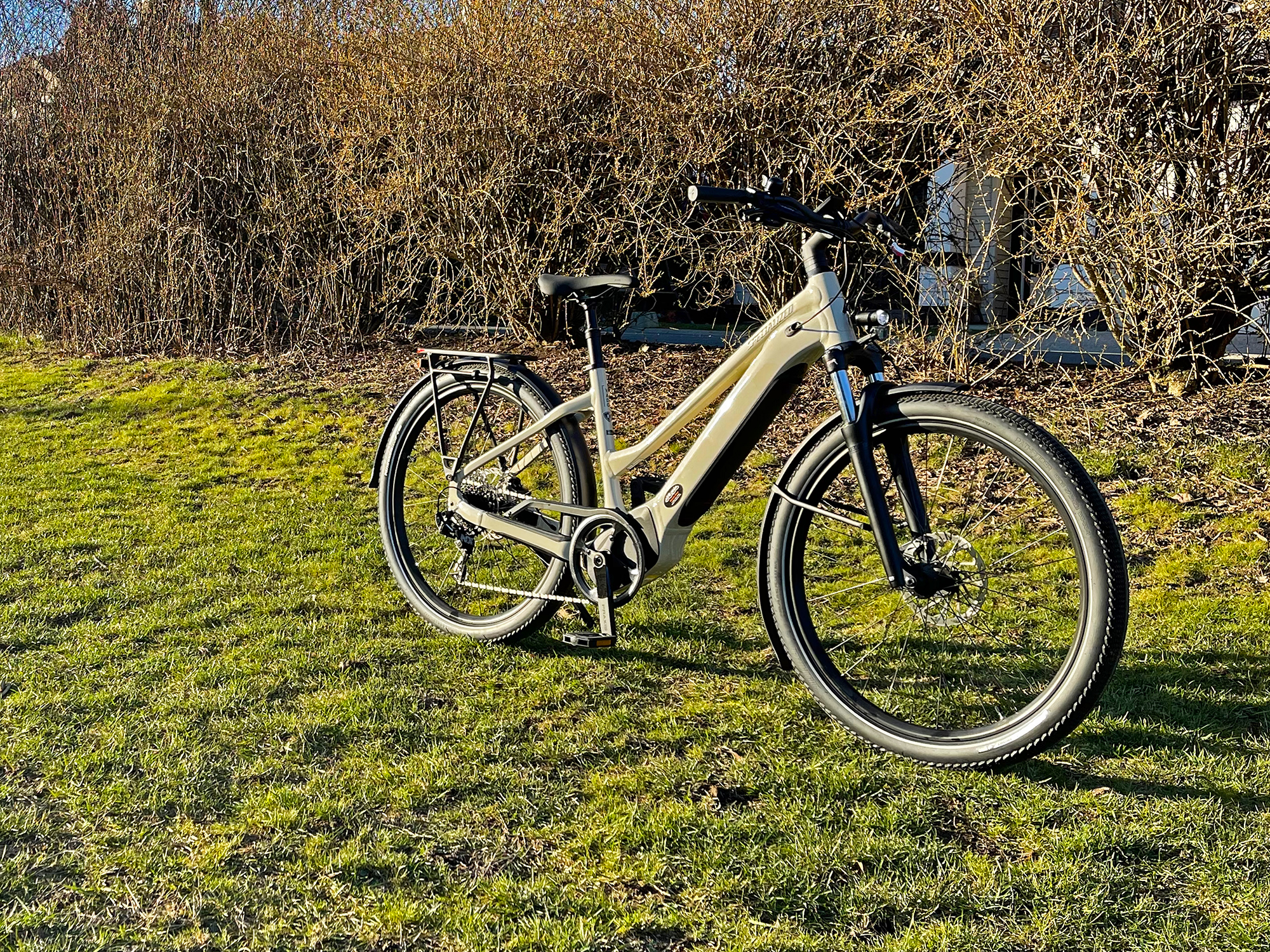

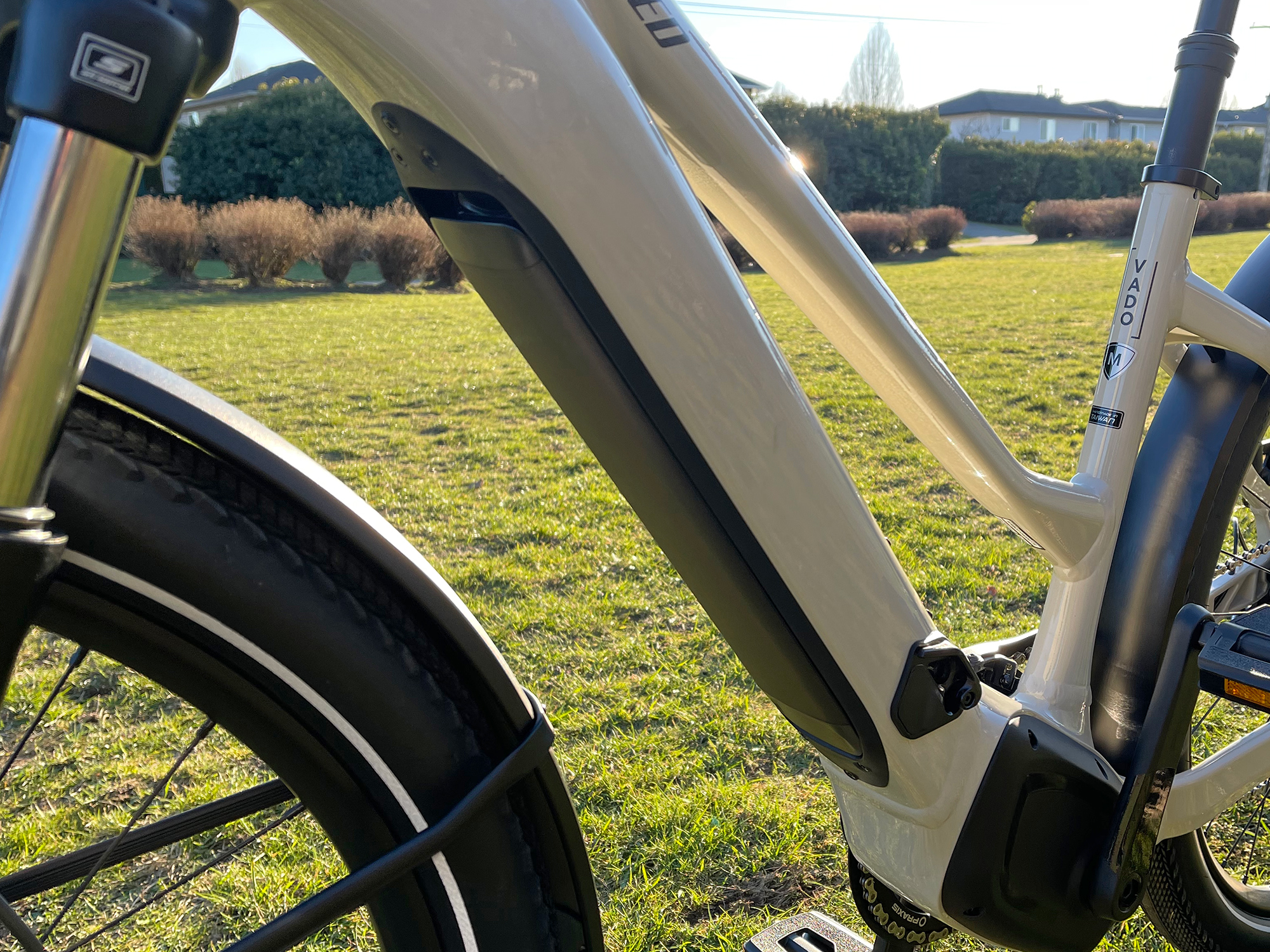
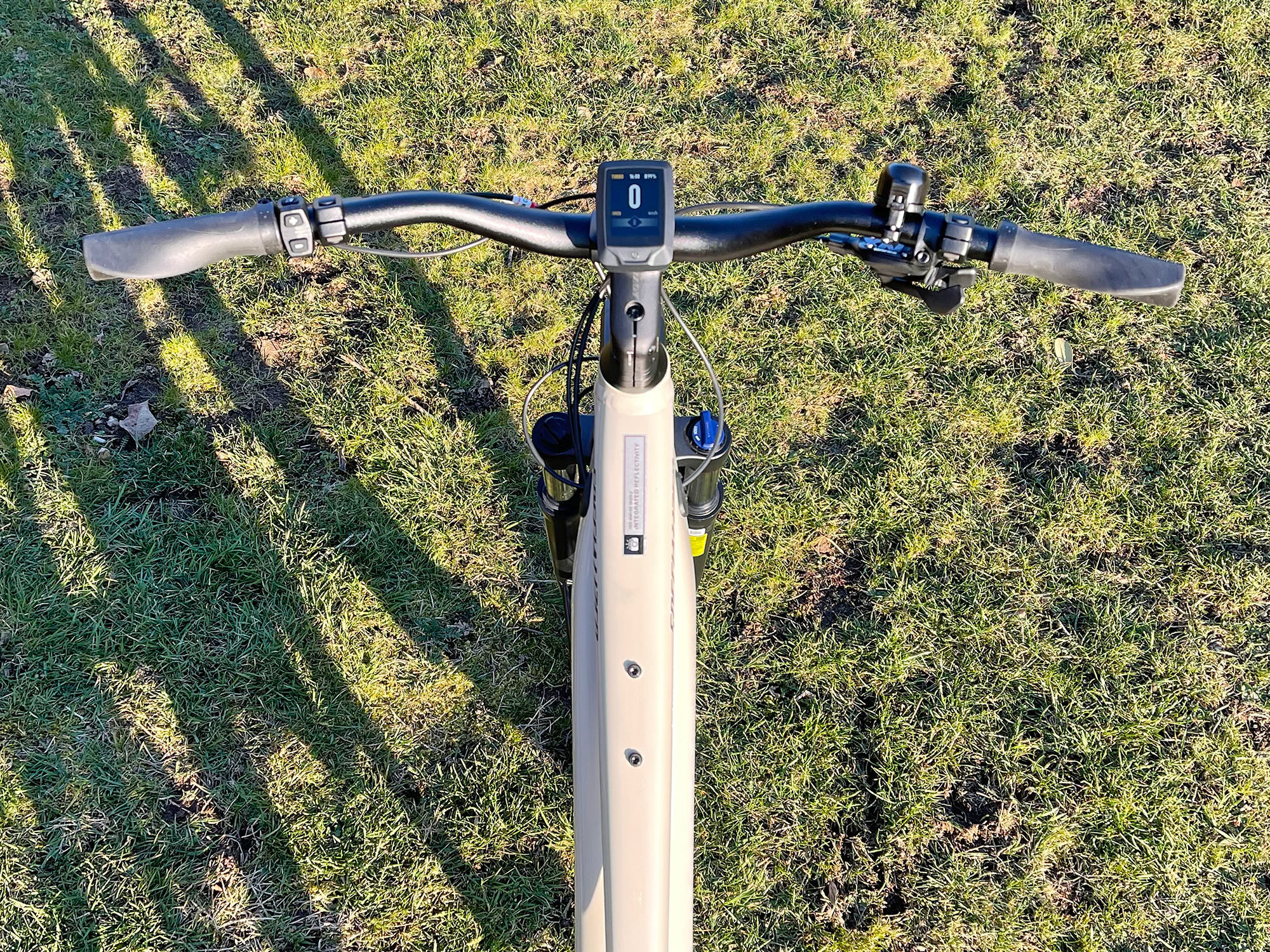
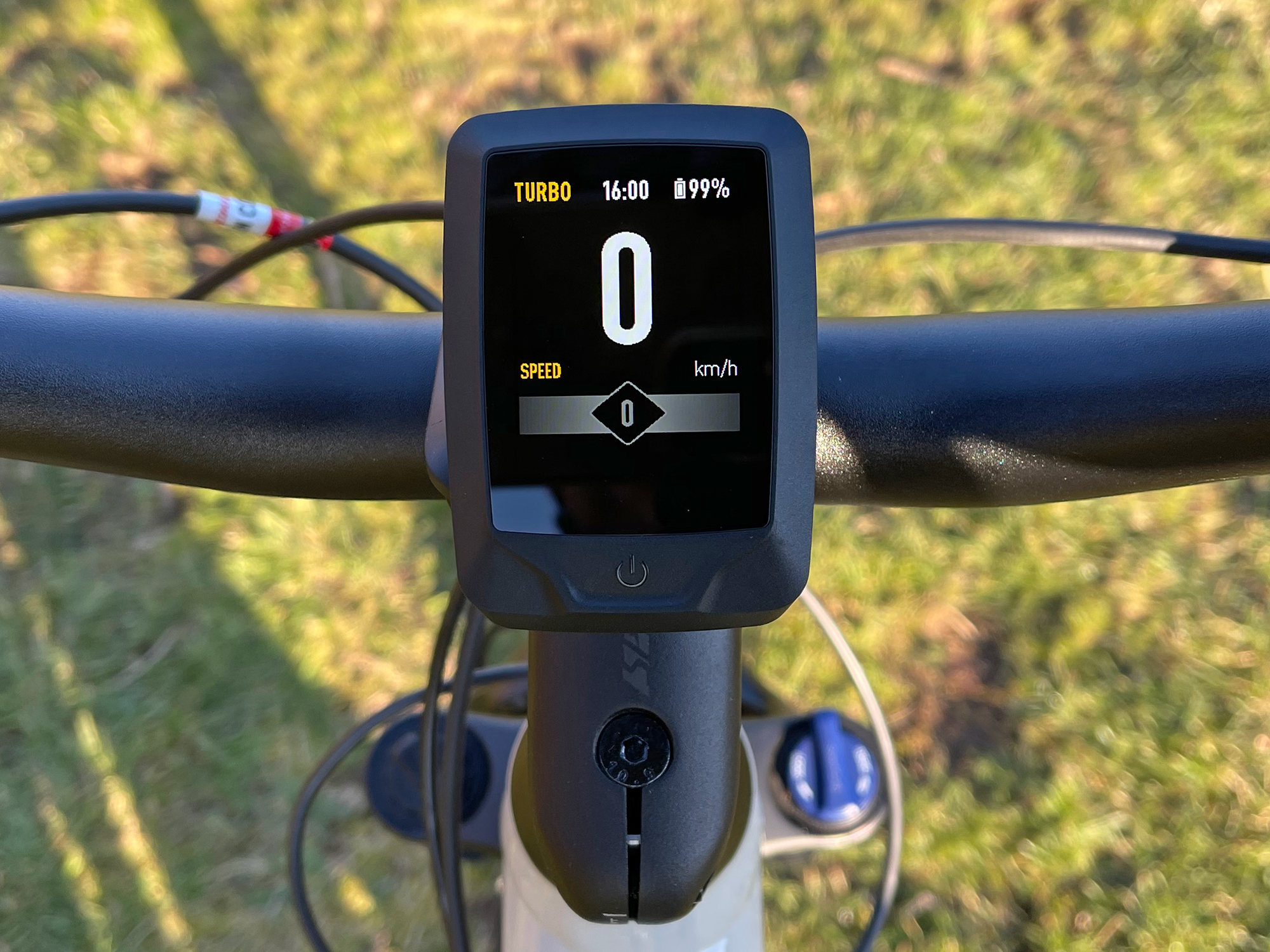
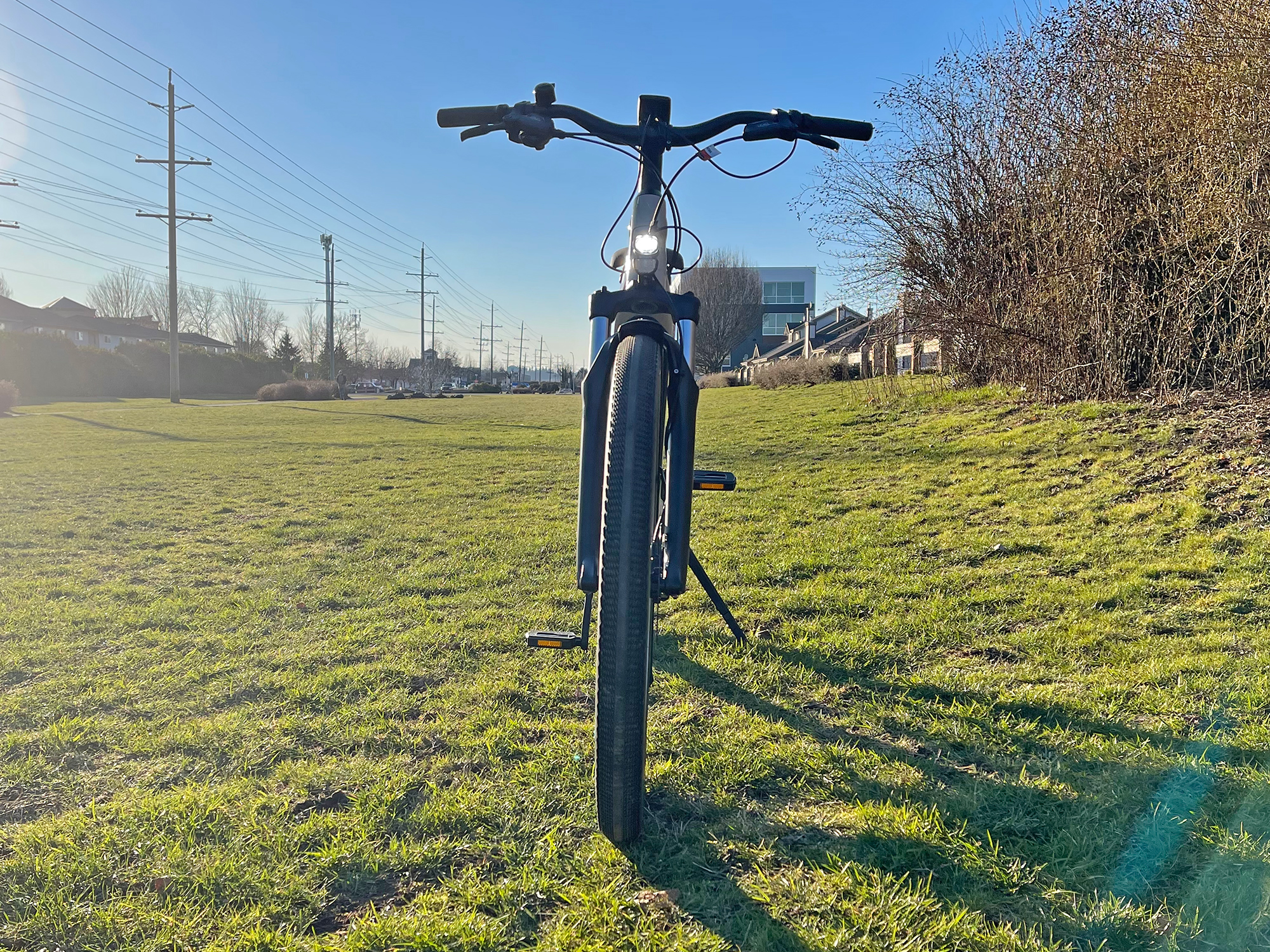
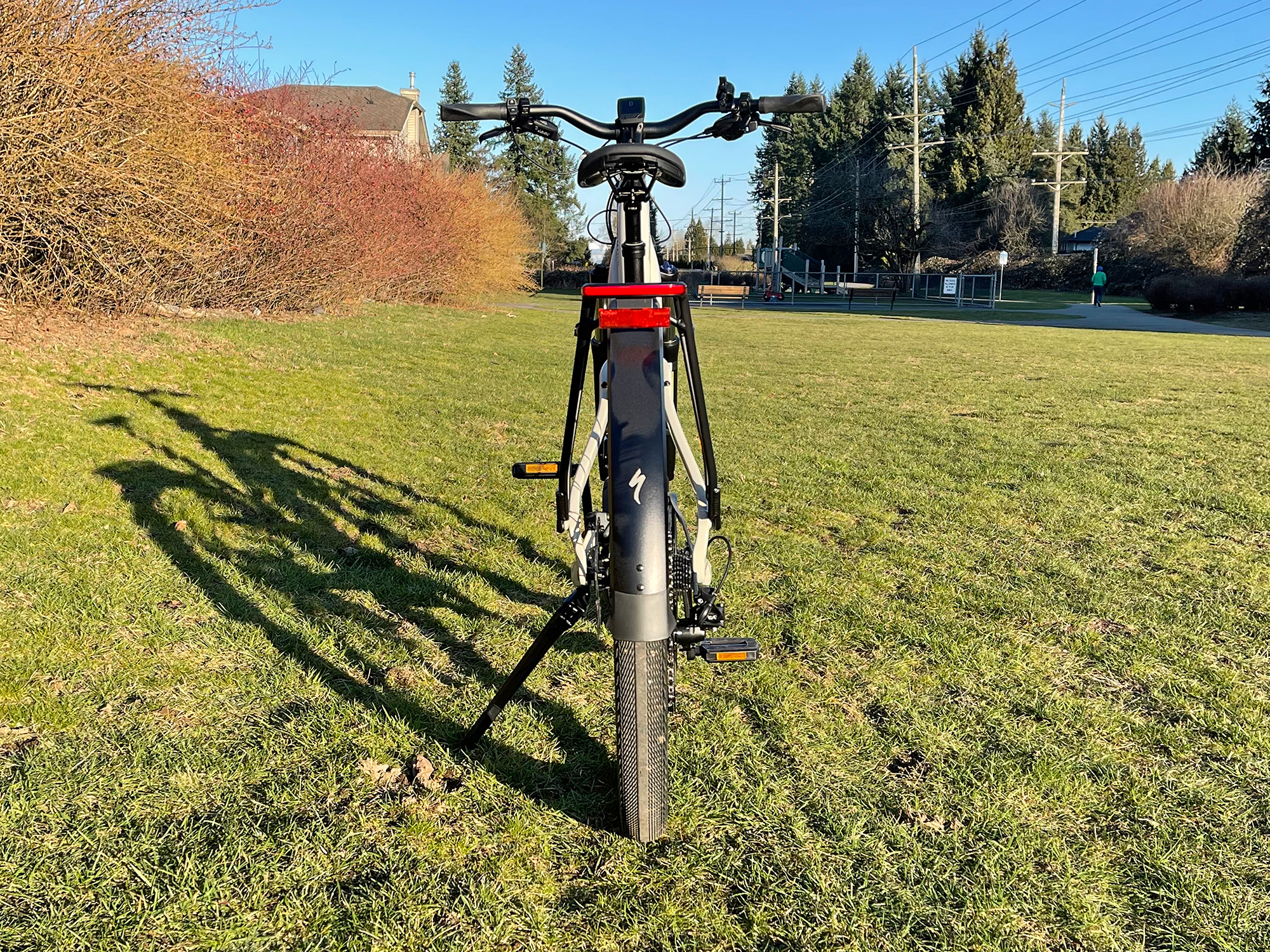

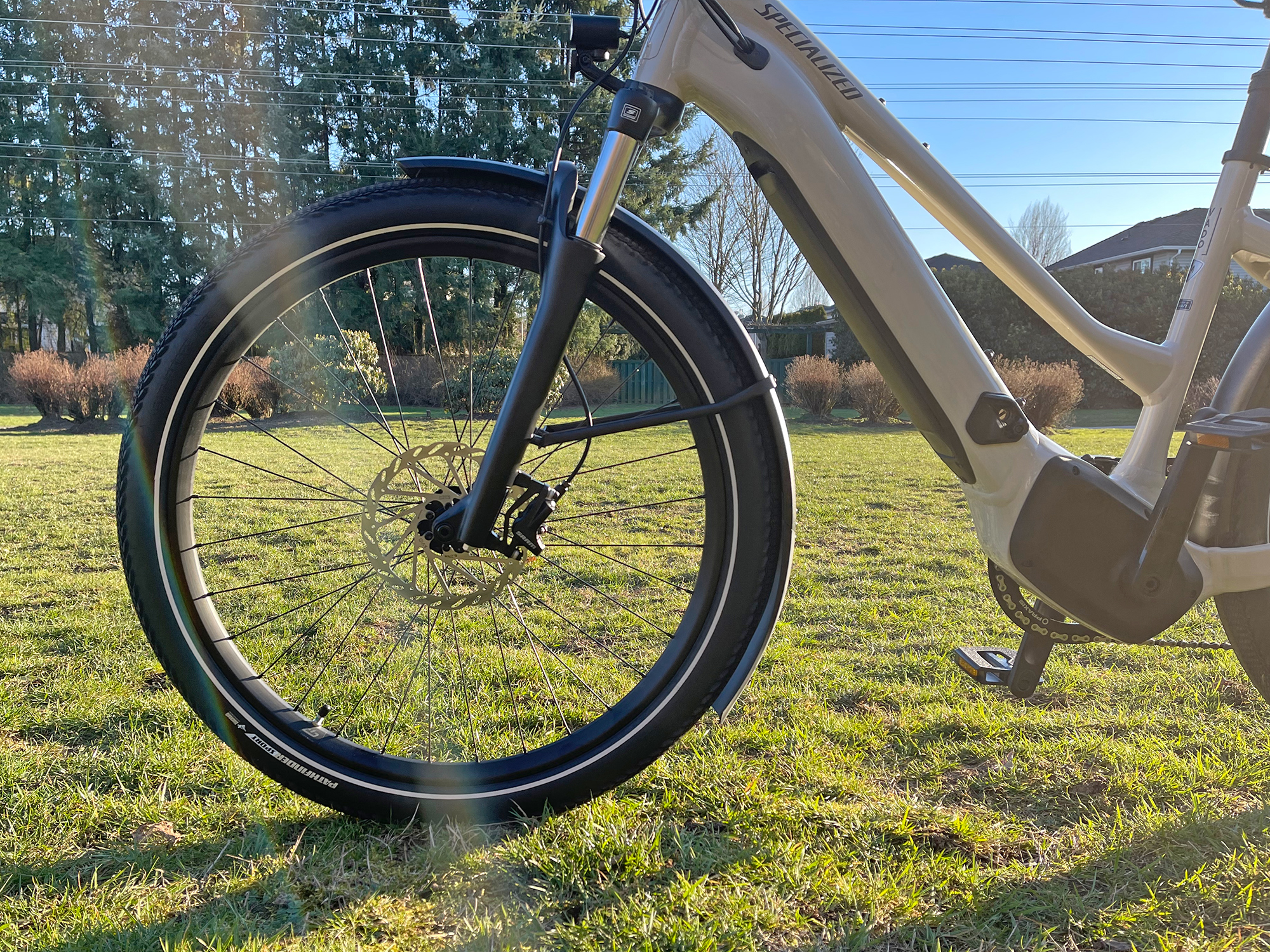
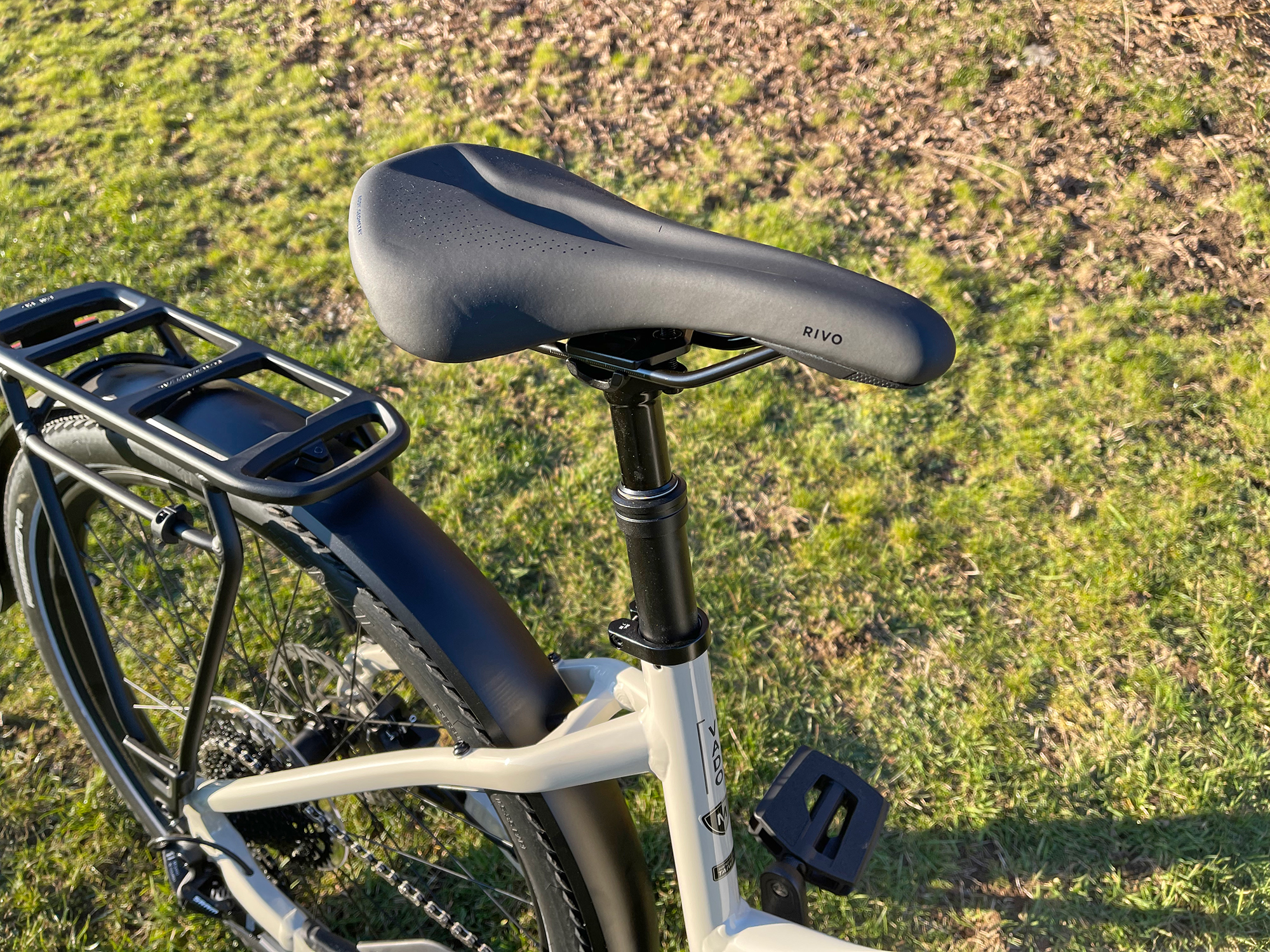
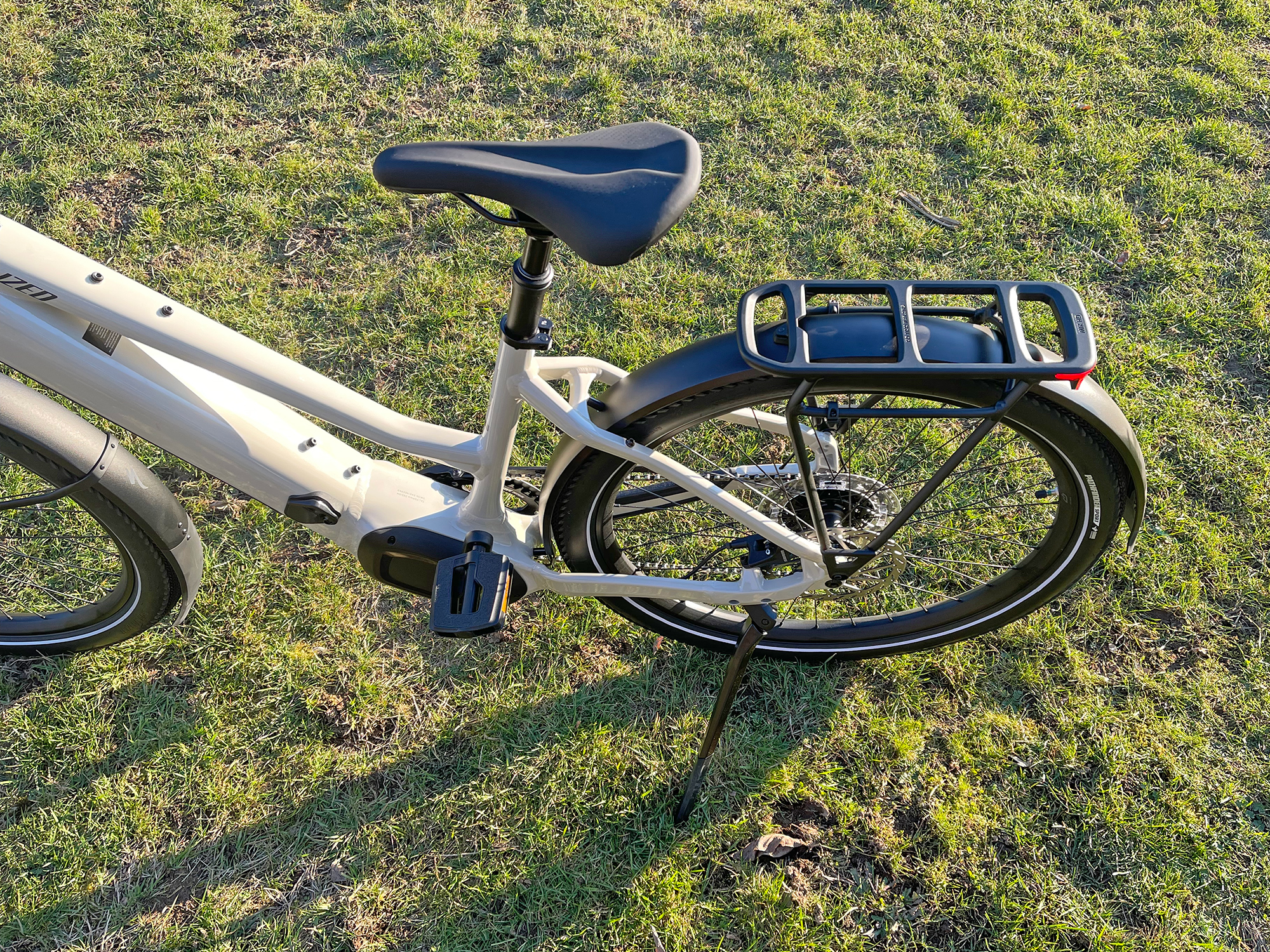
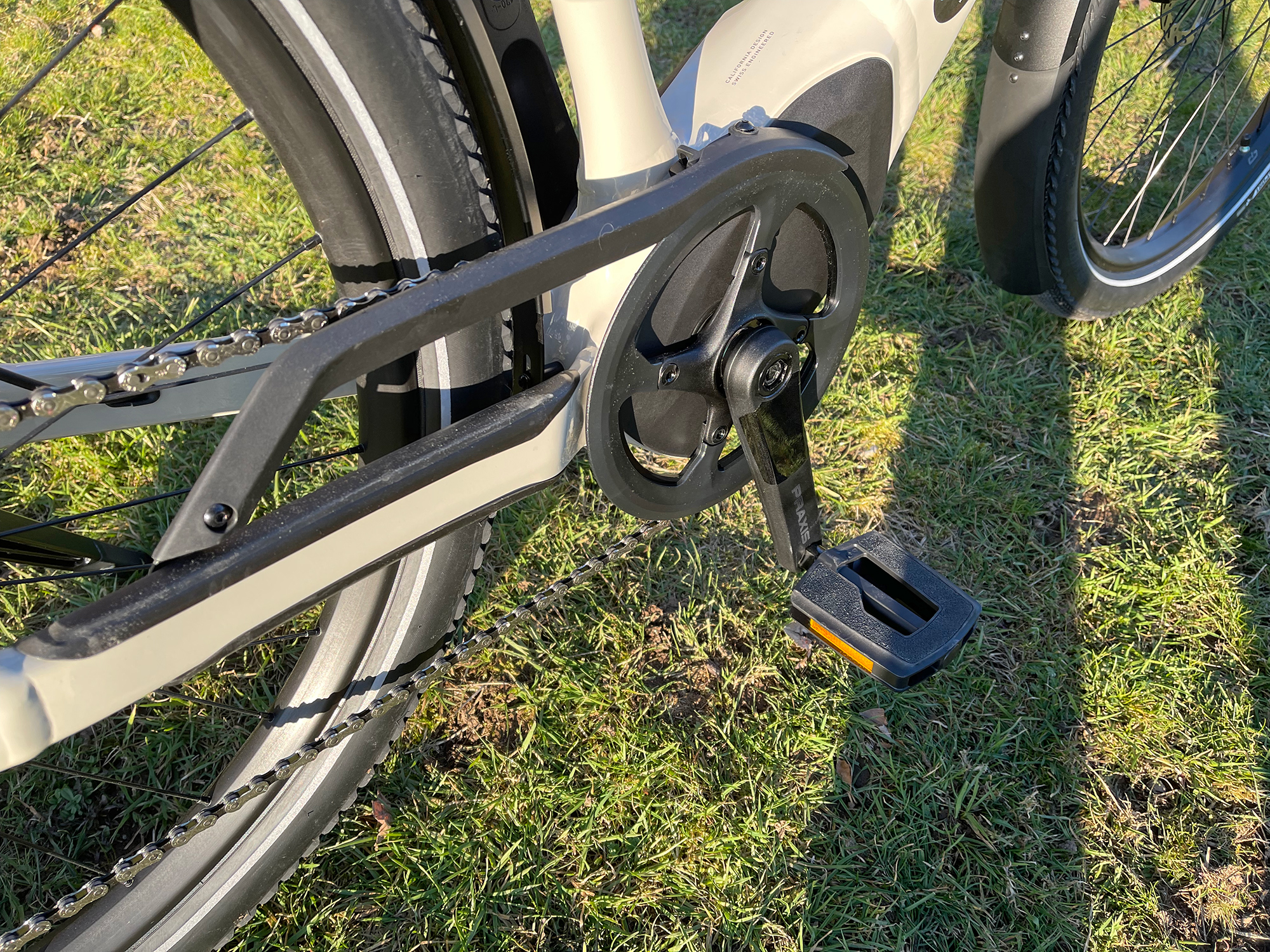
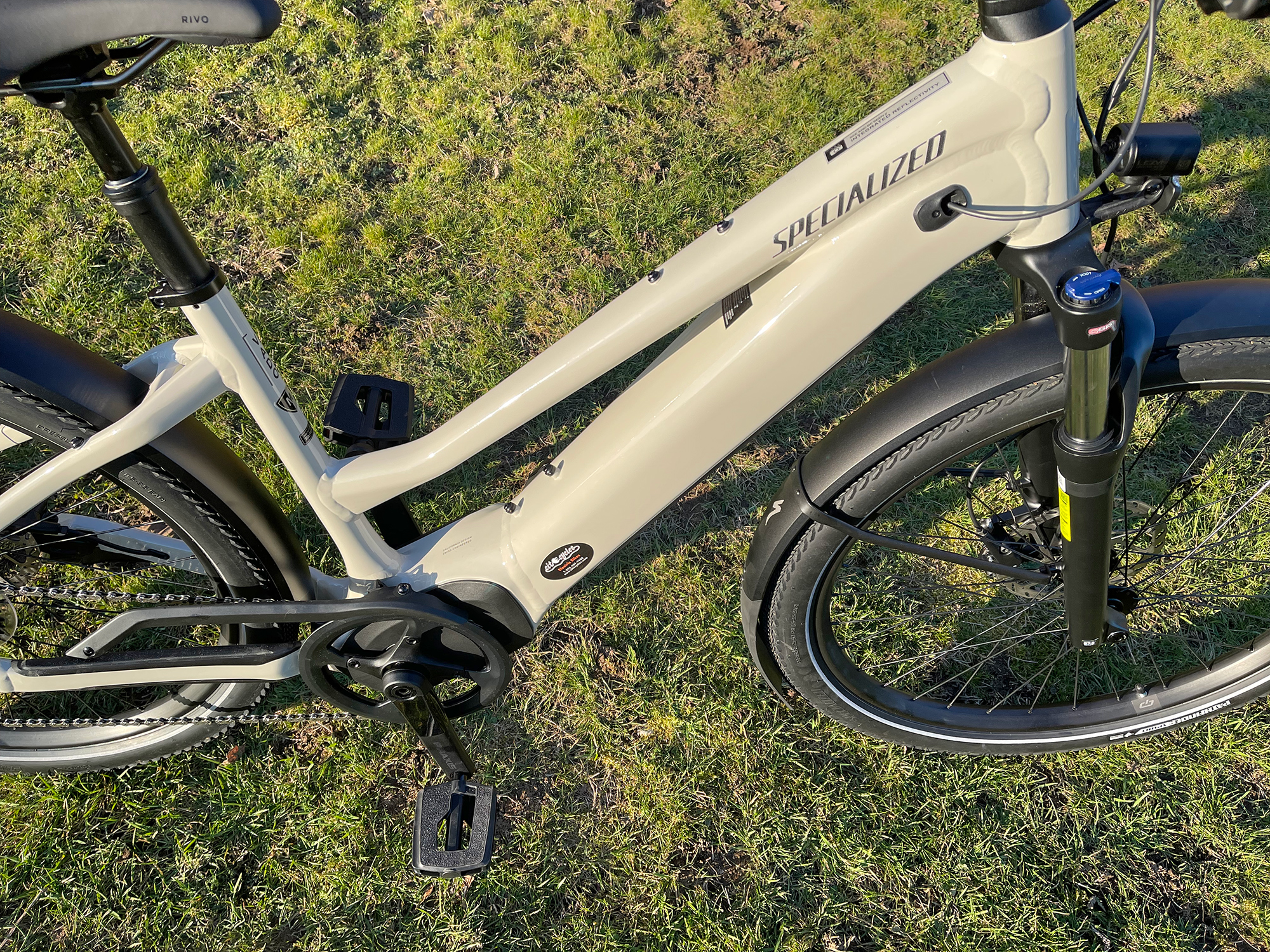
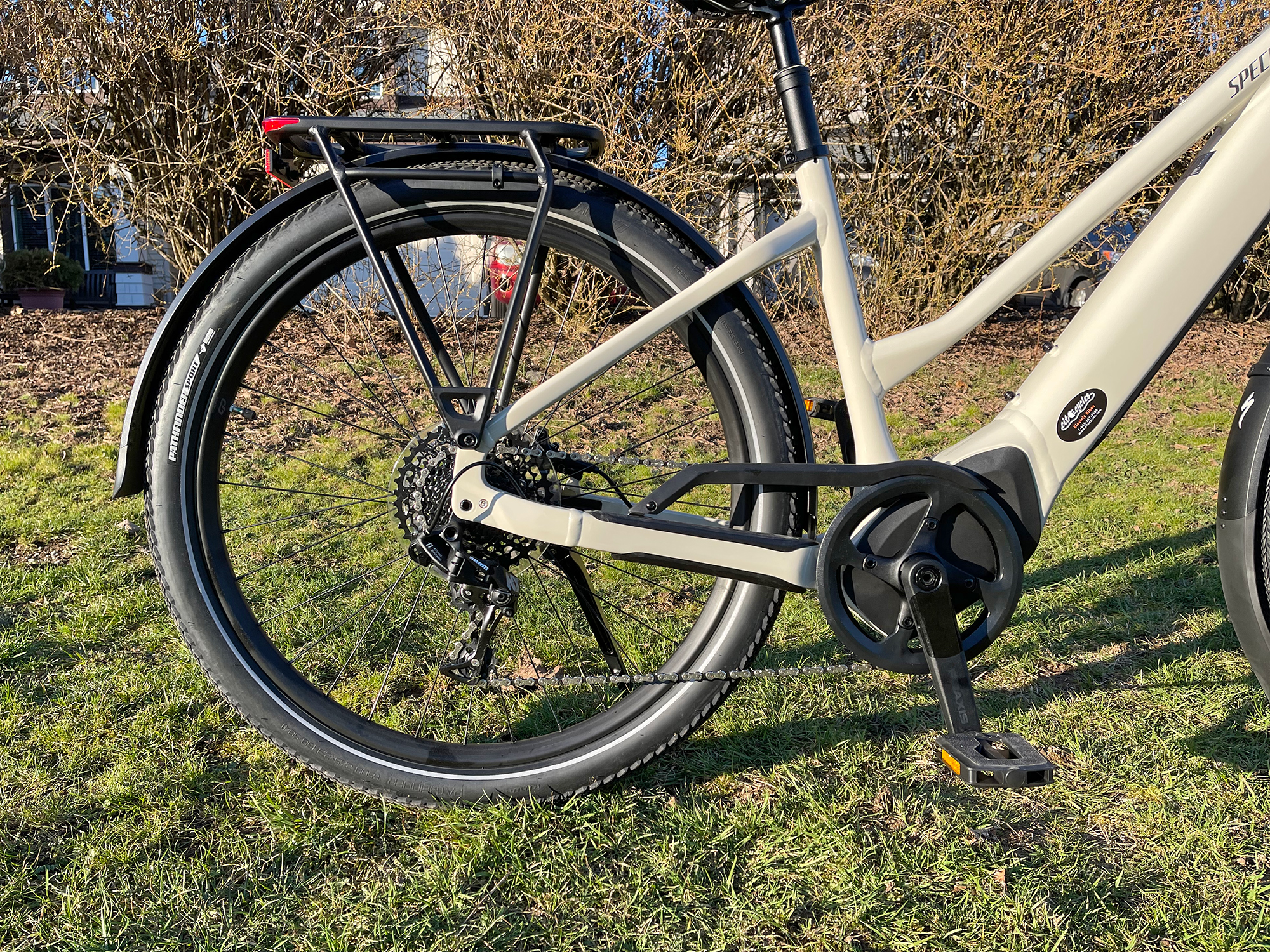
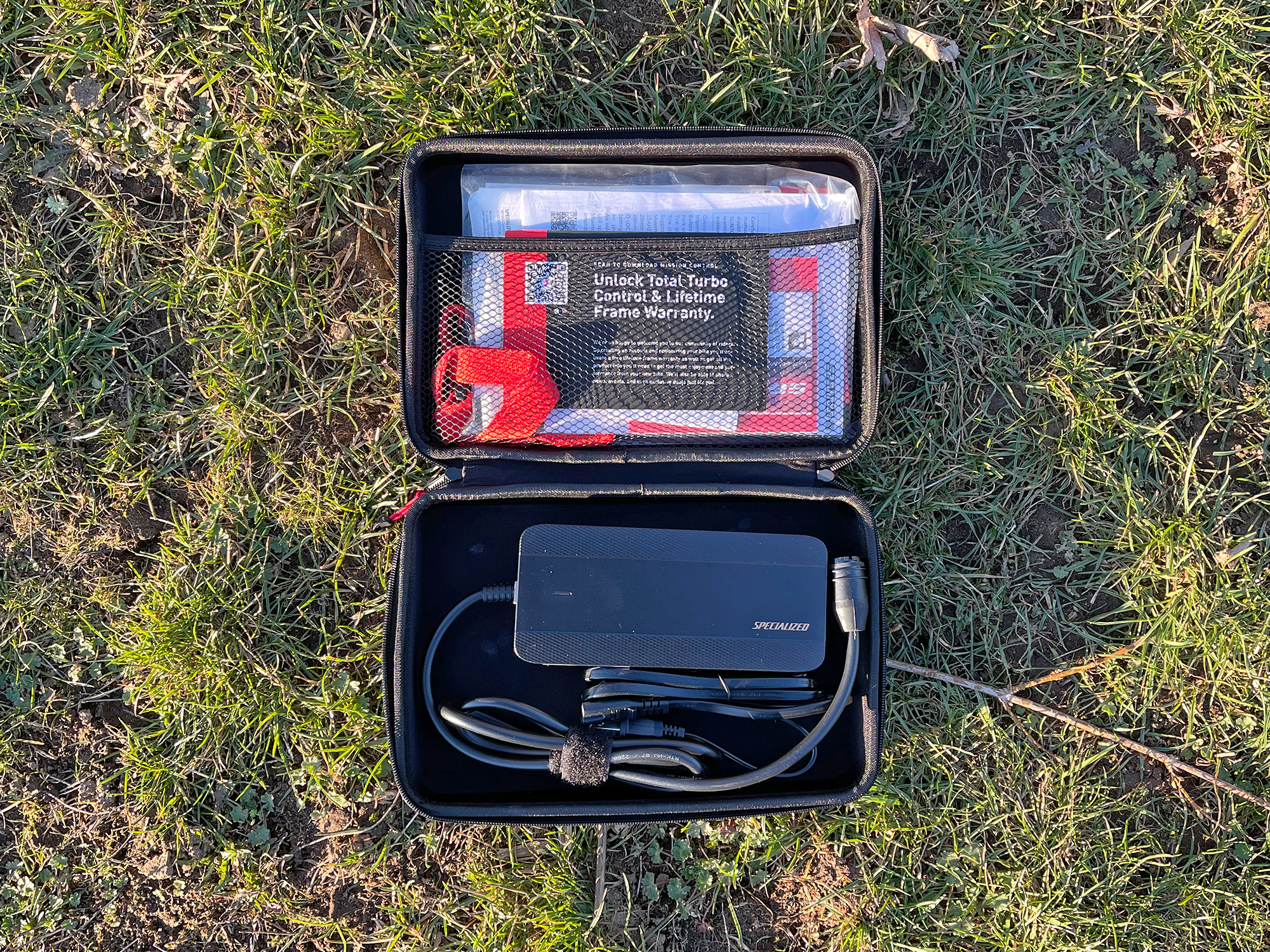
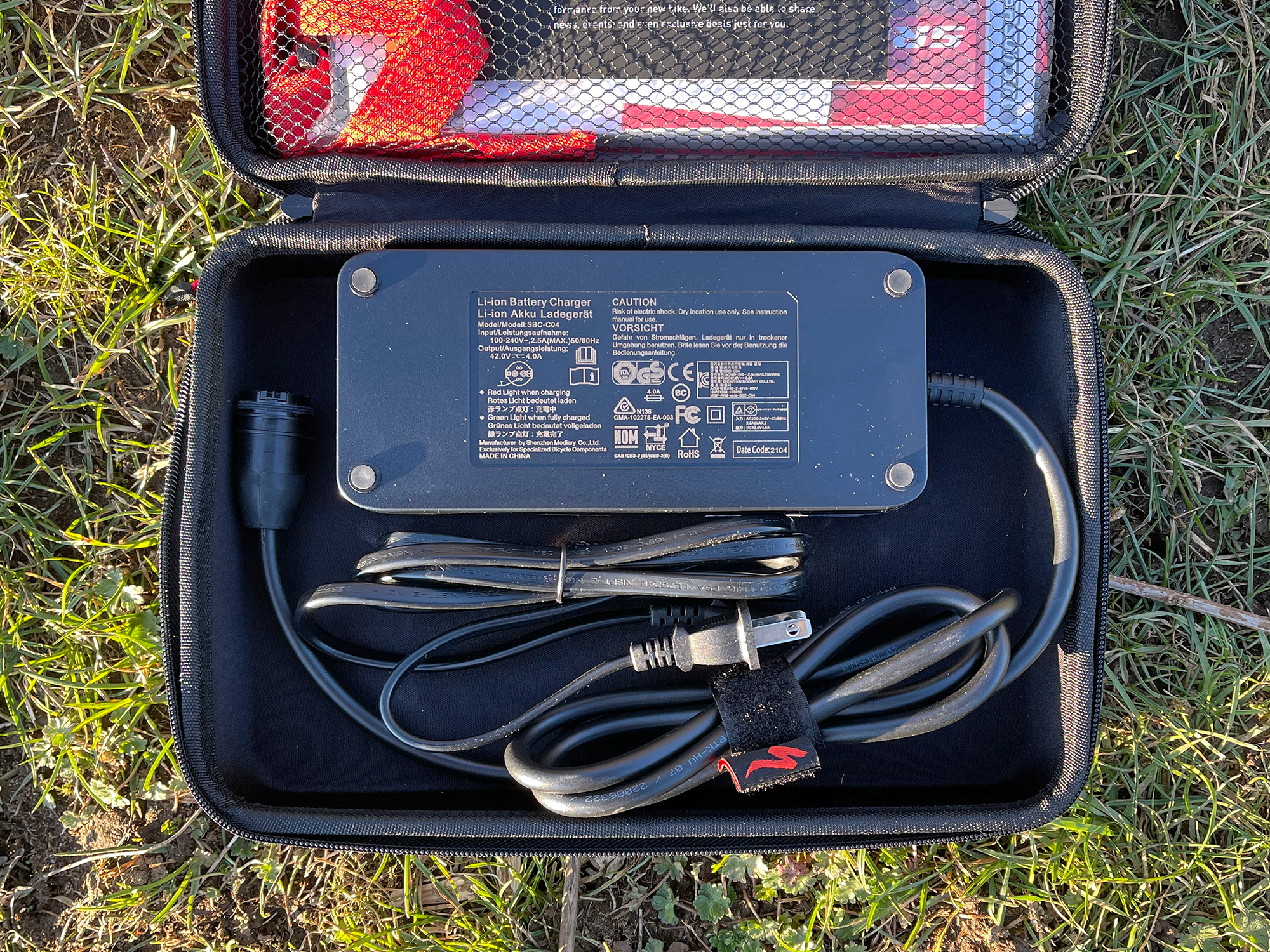
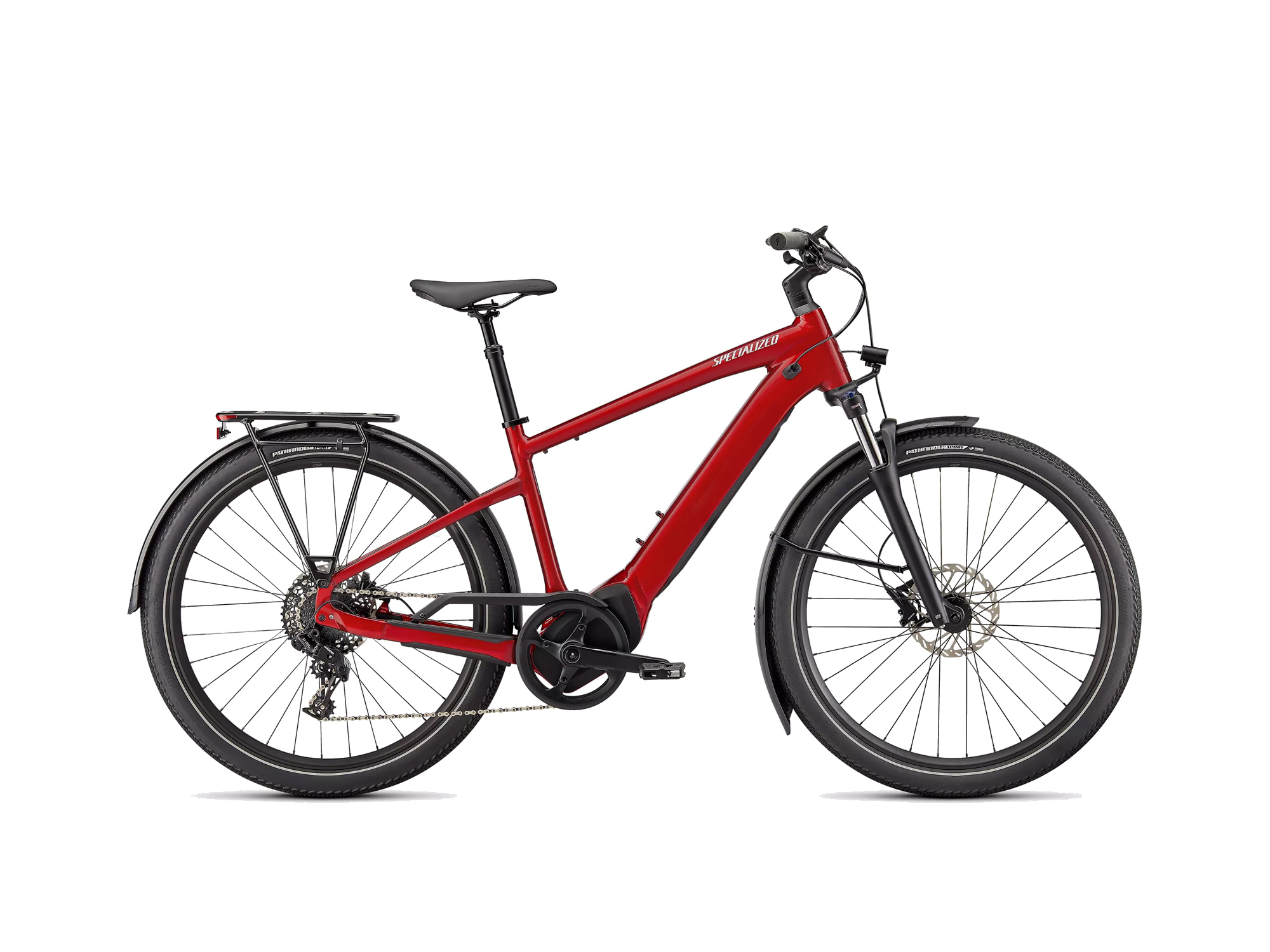
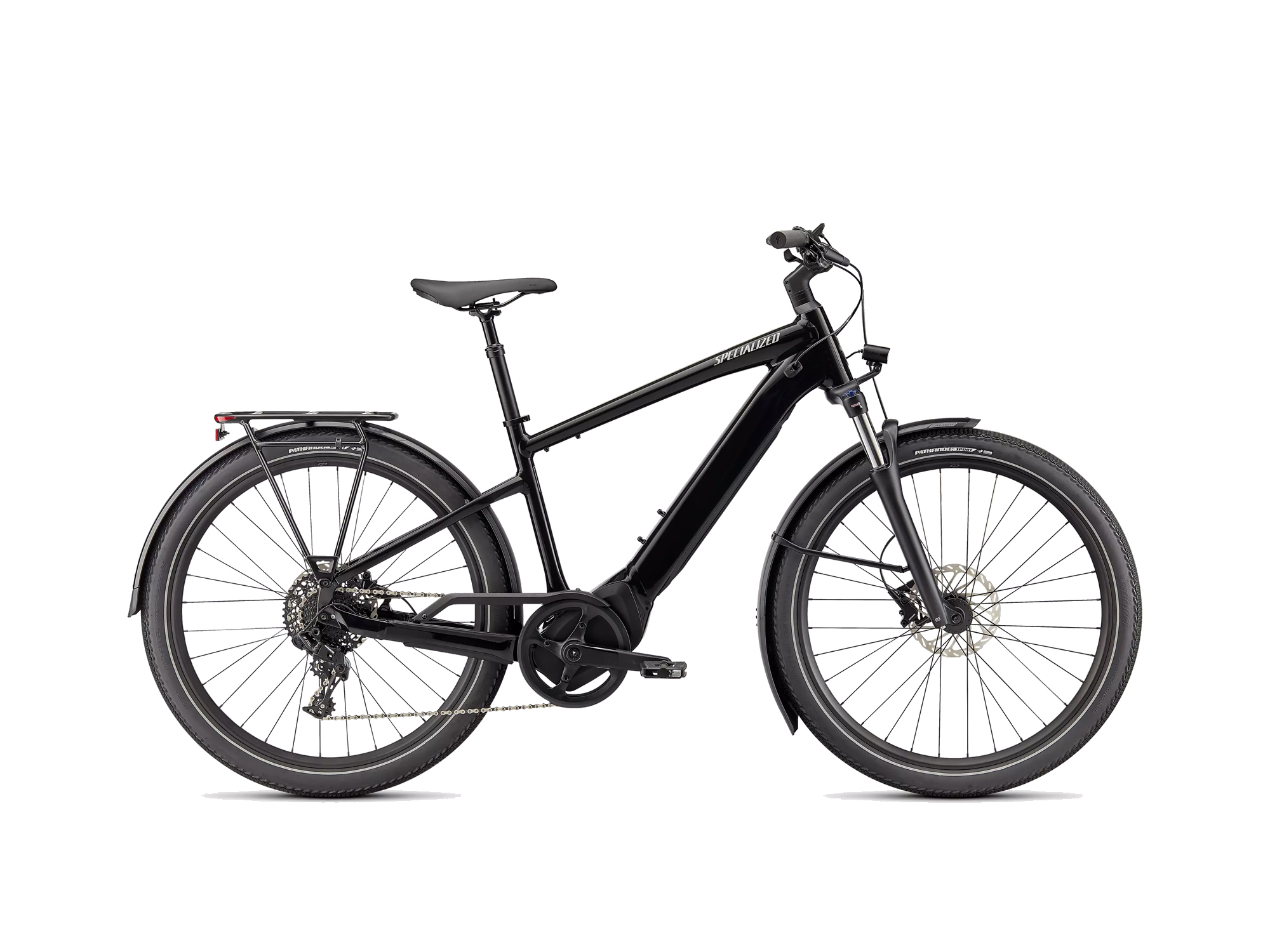
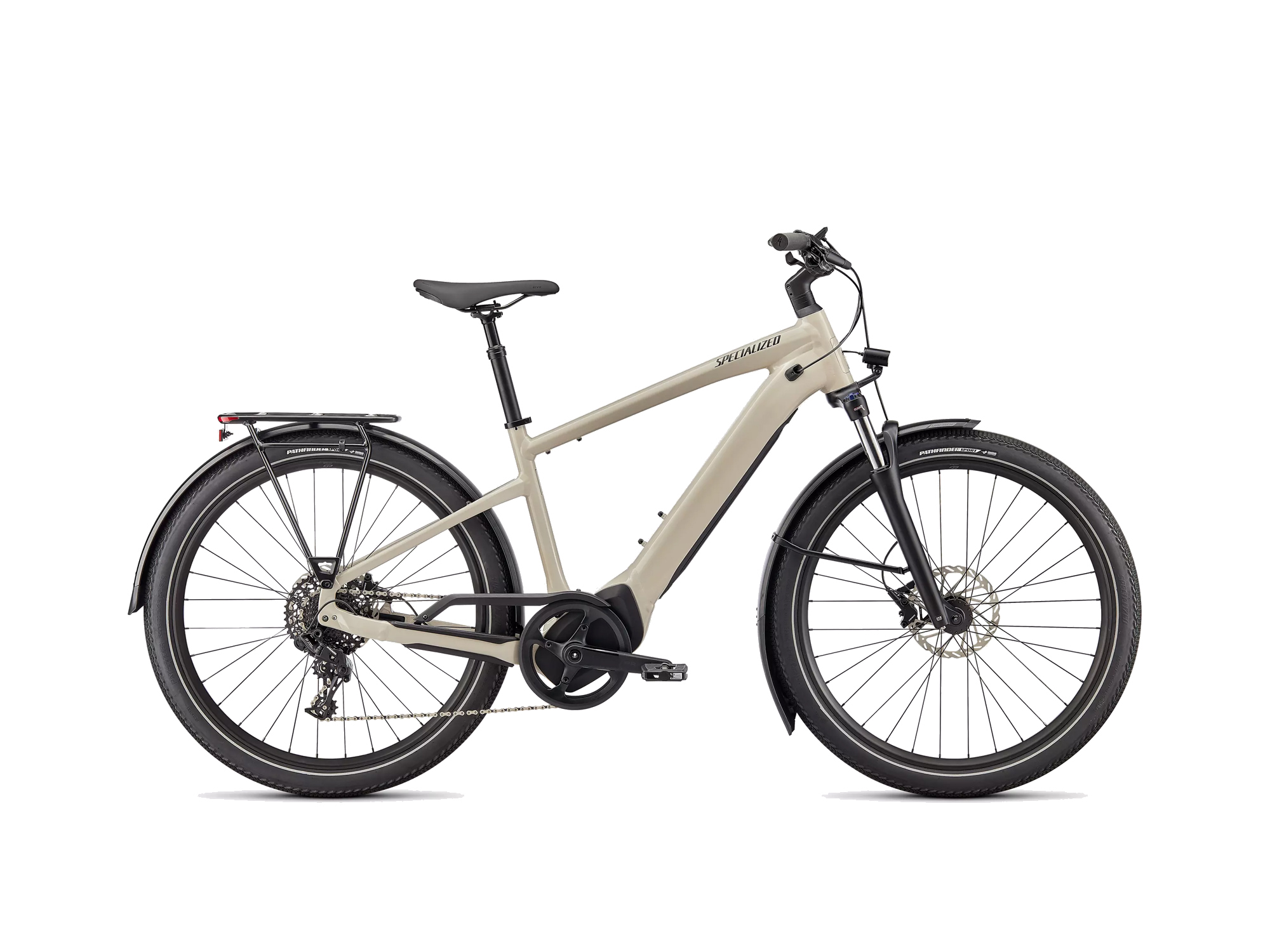
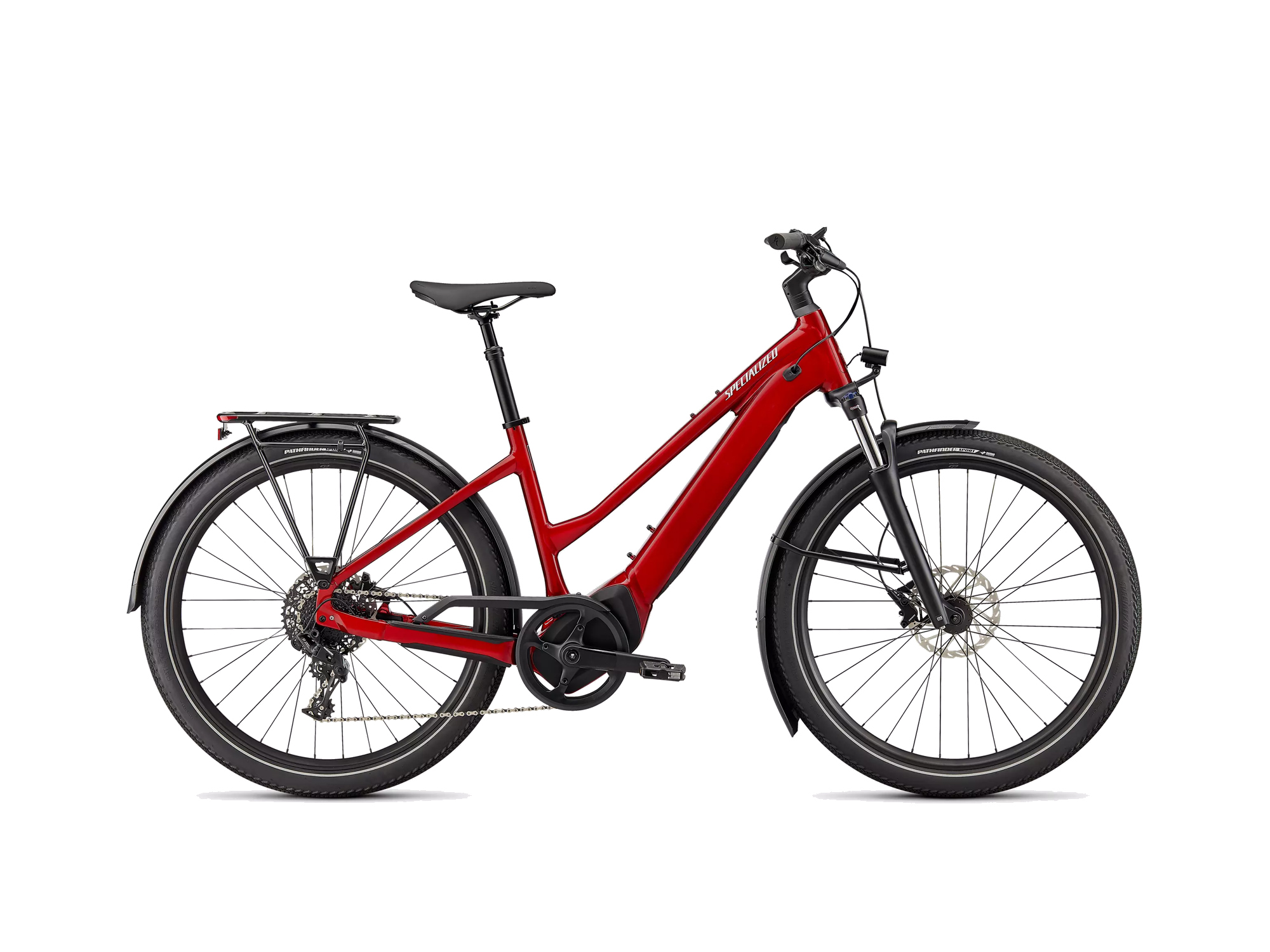

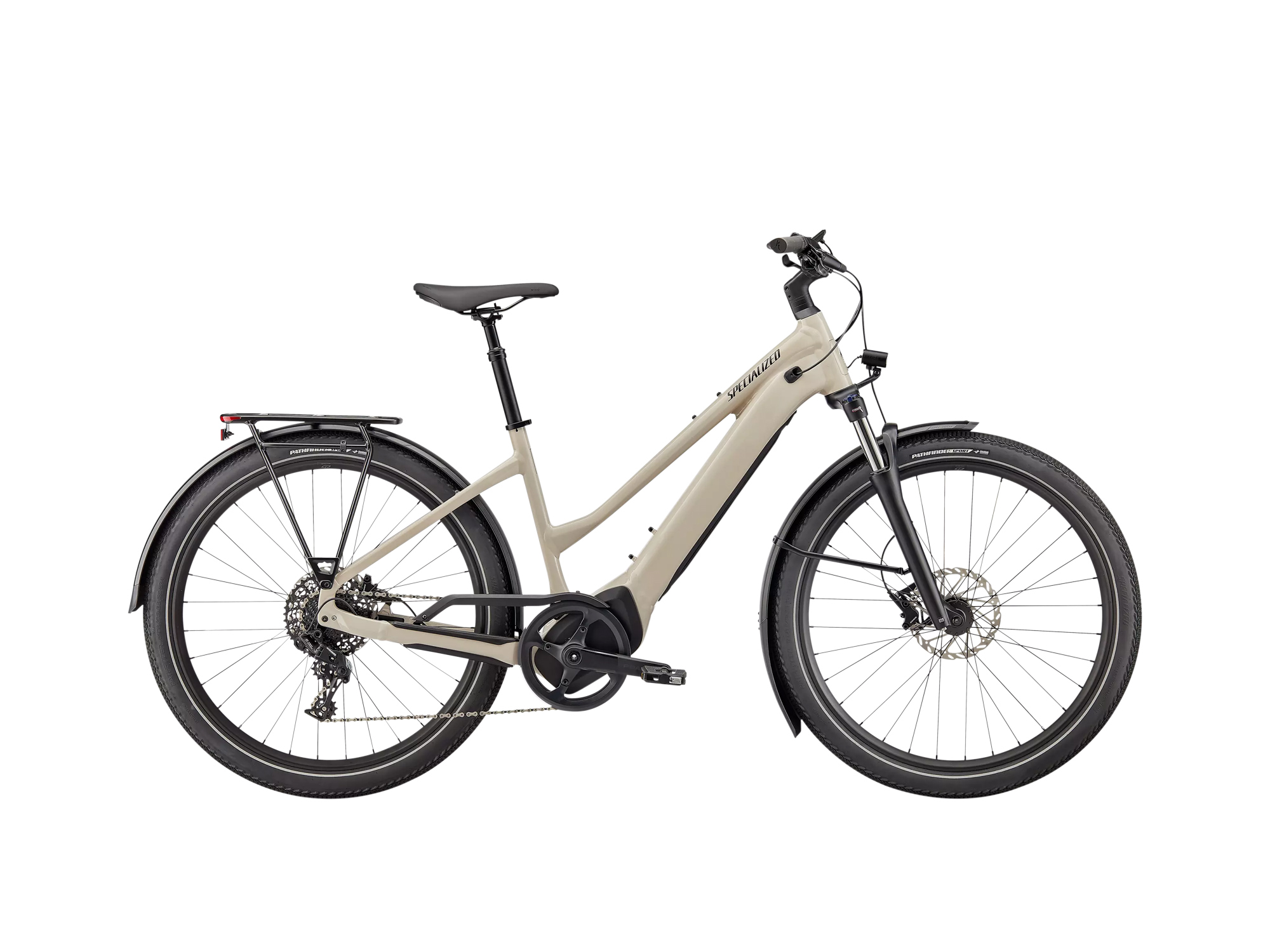

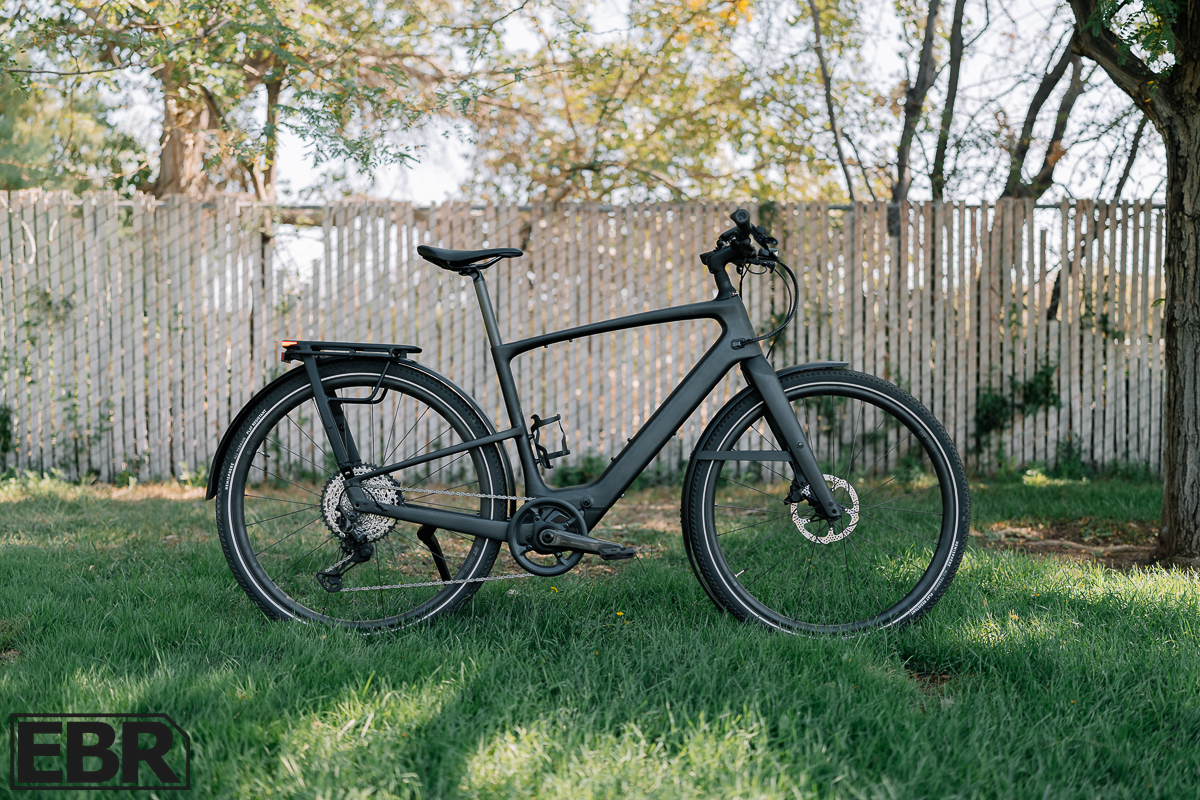
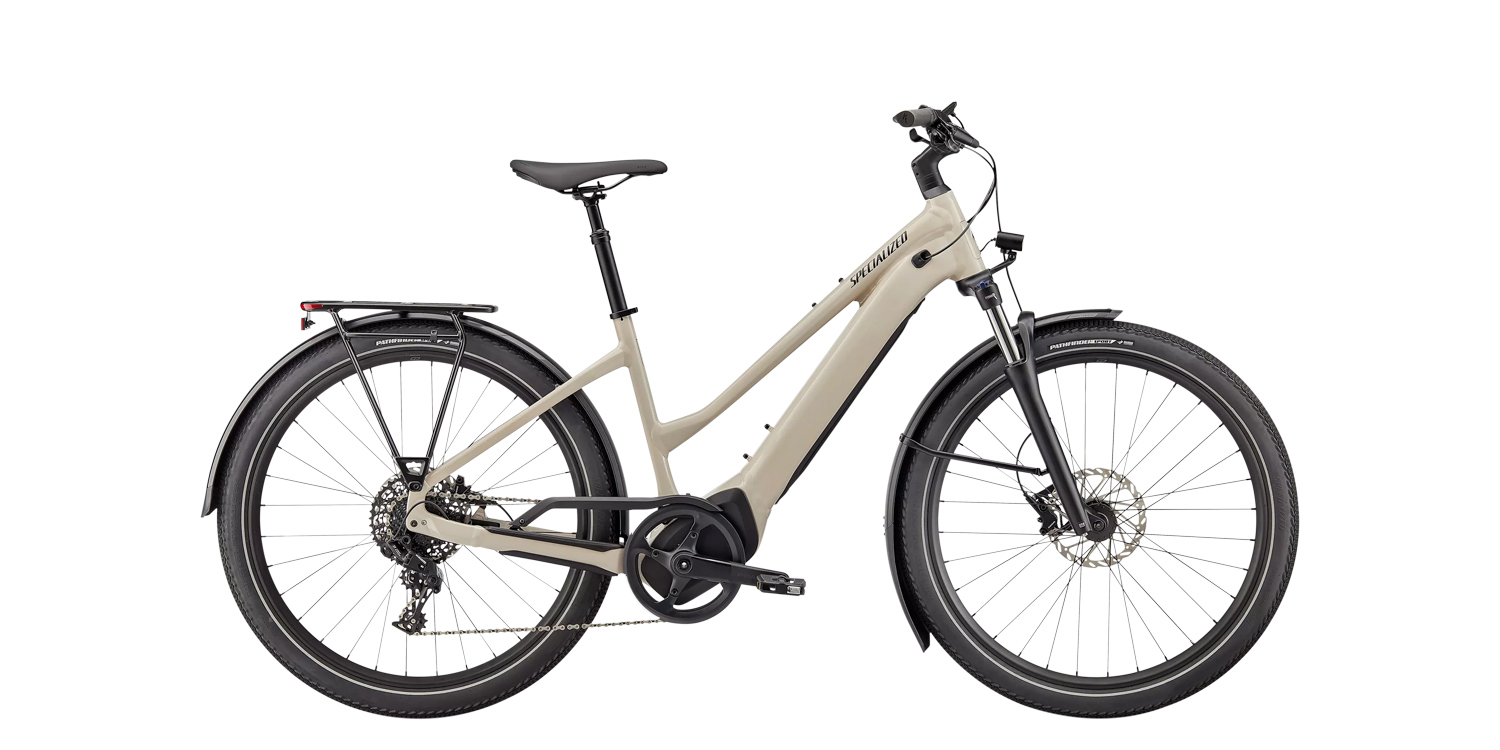
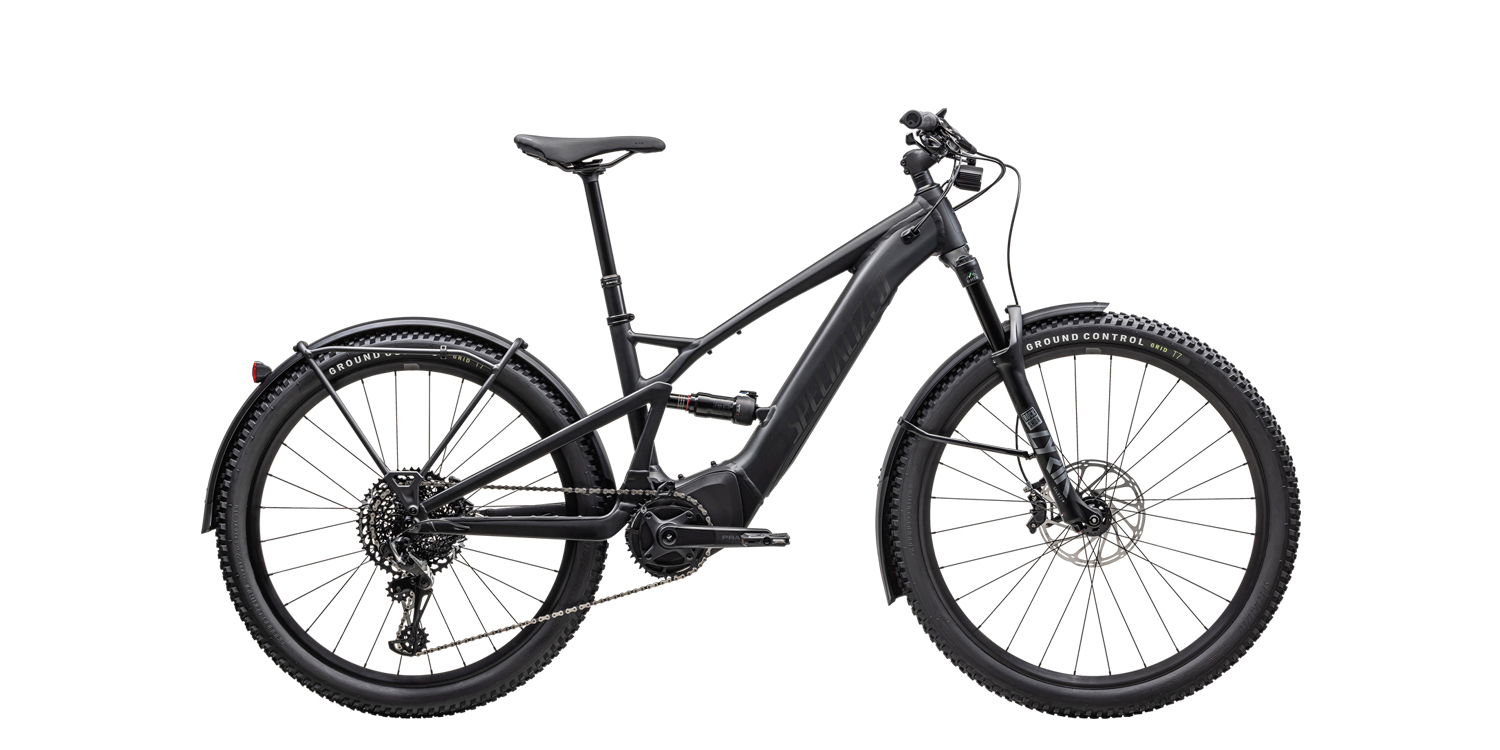
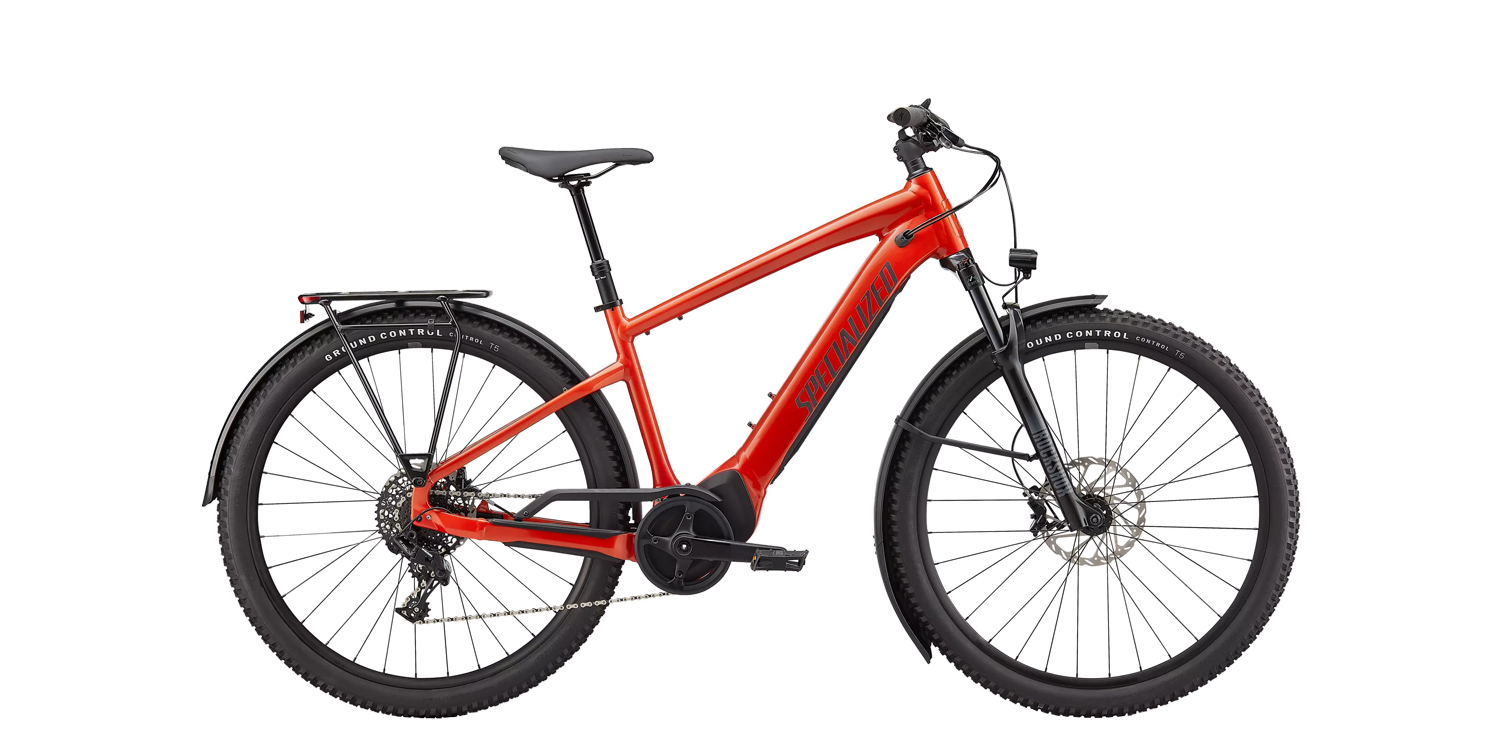
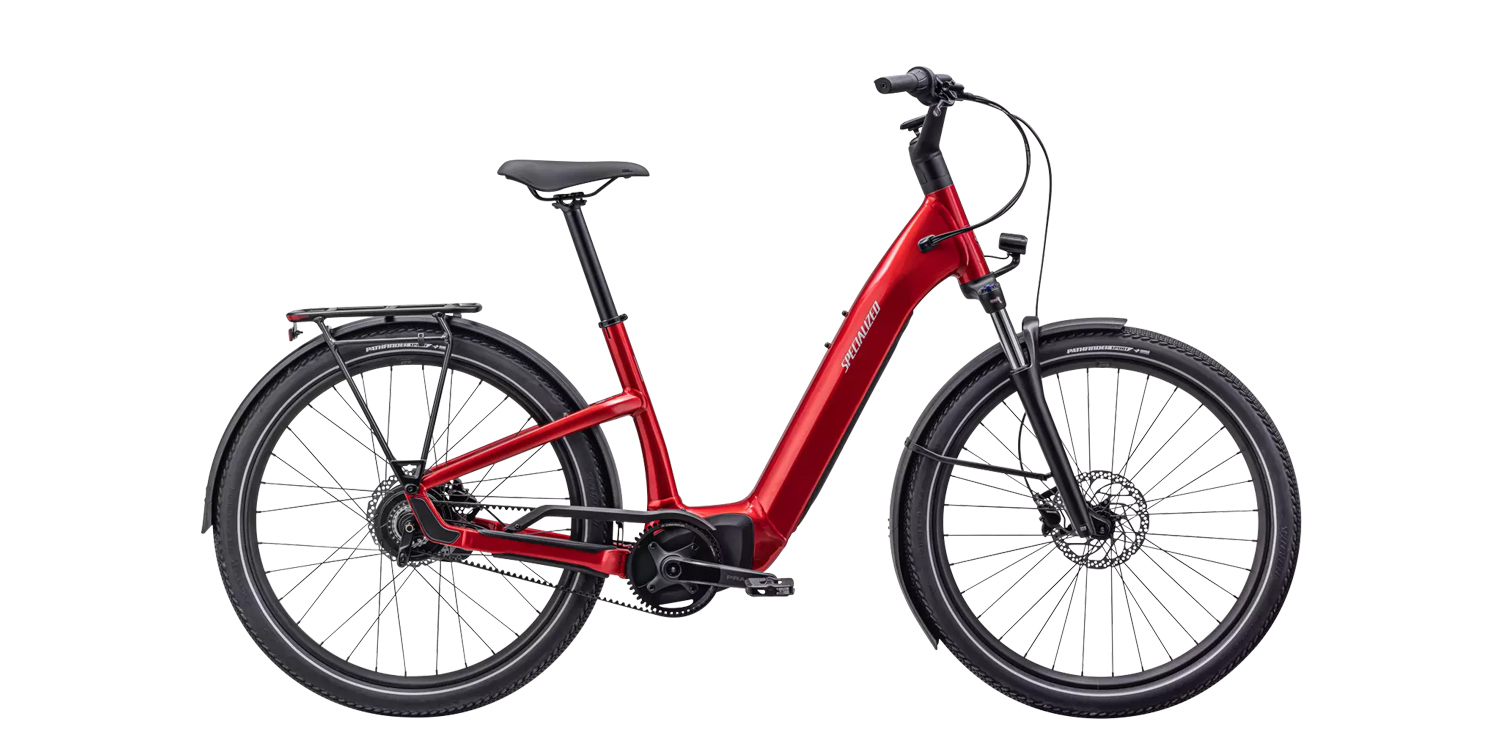
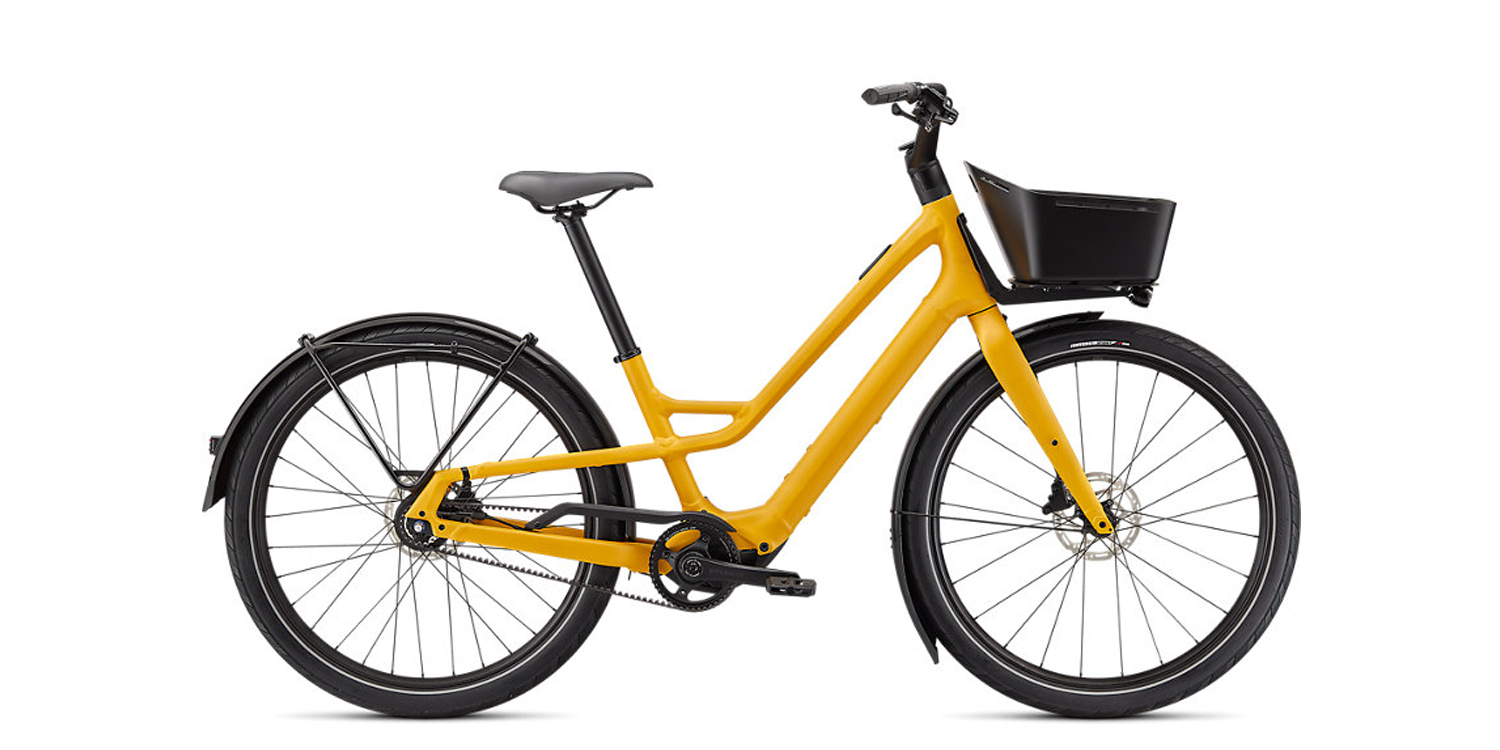
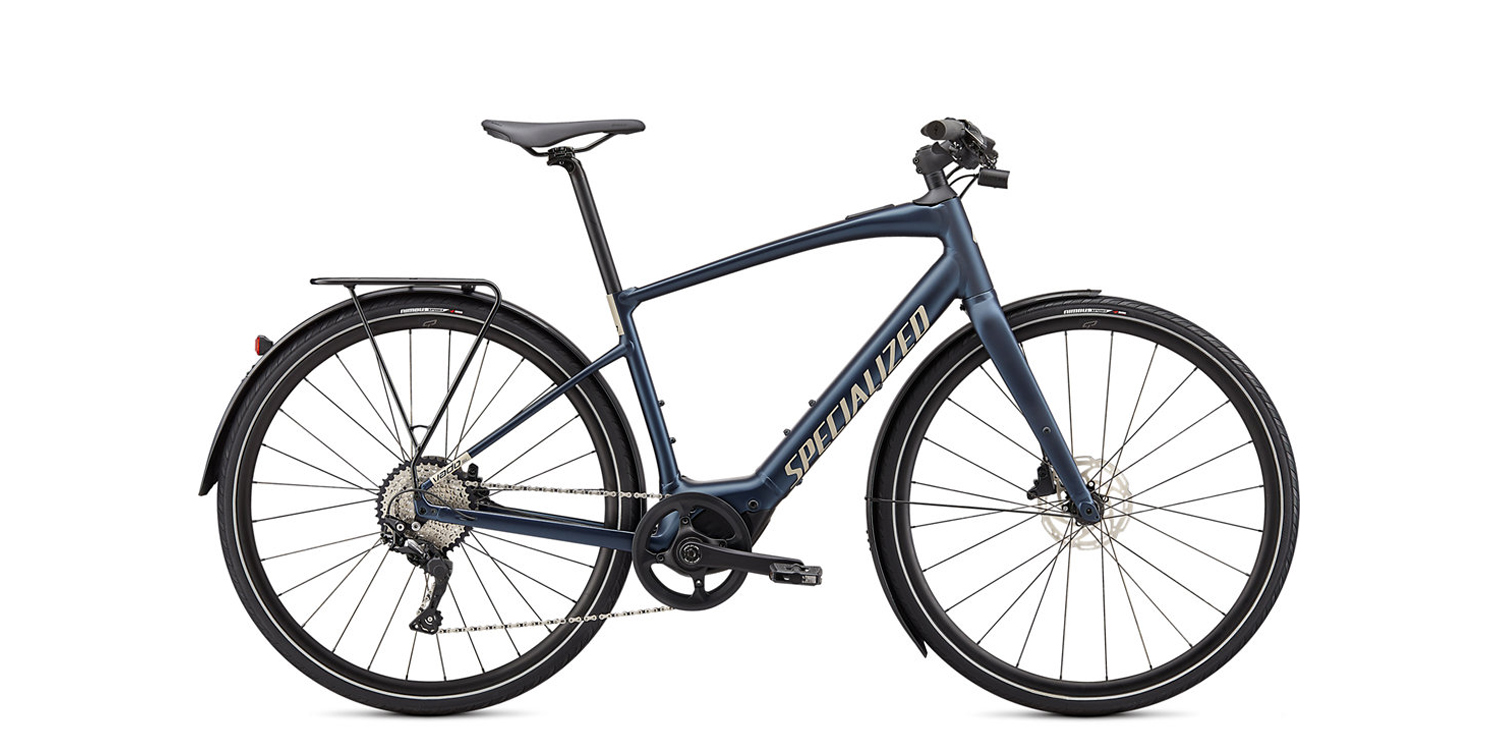
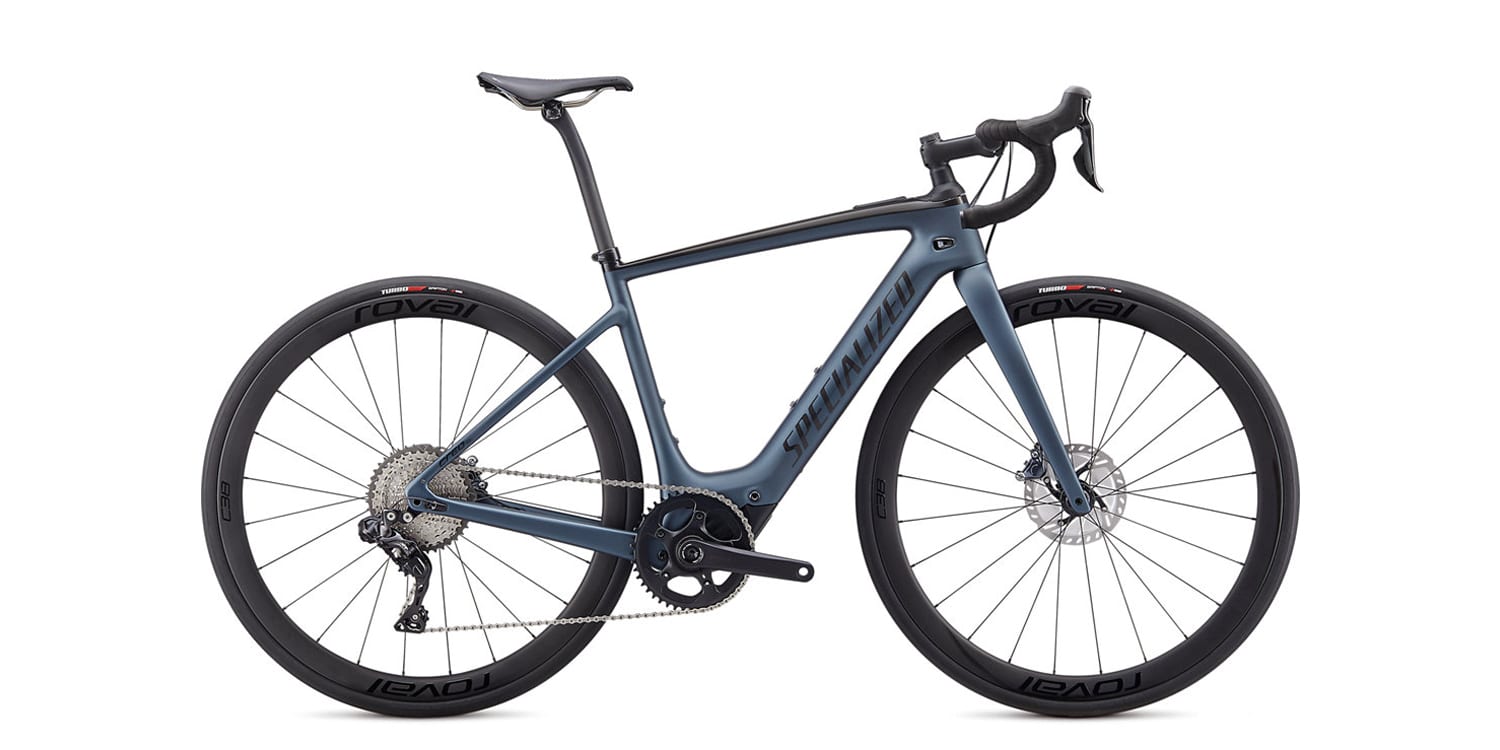
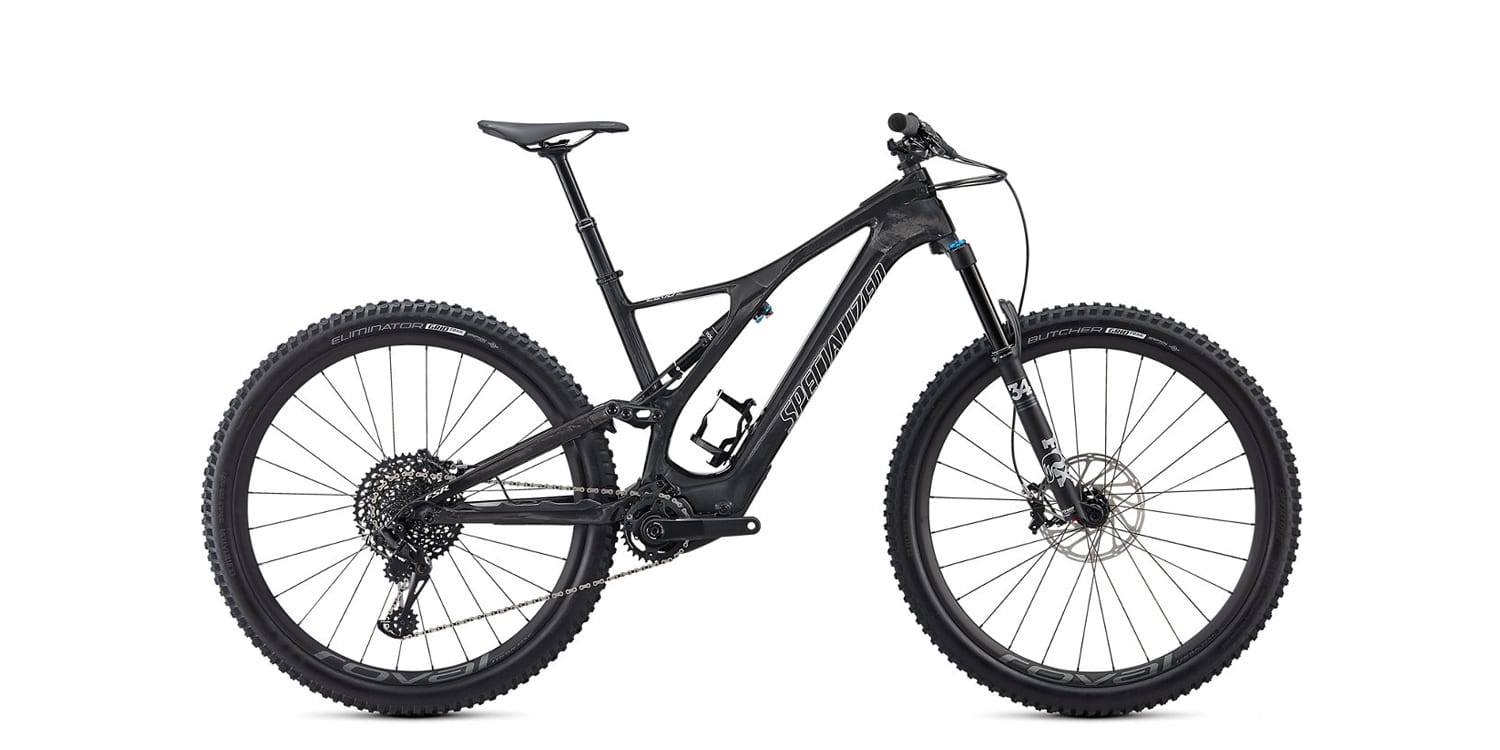
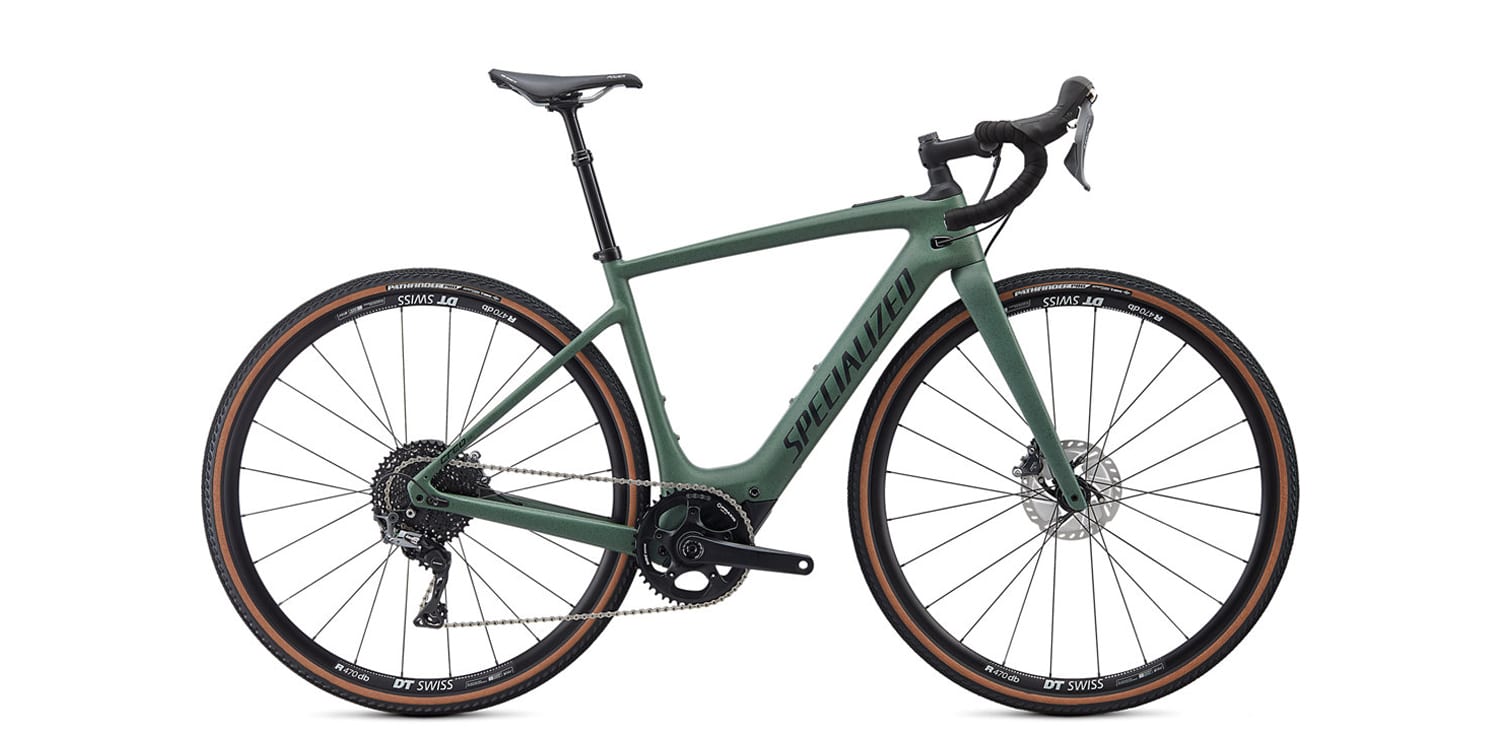
Sean Conway says
Court, do you have an opinion about frame stability for a large 6’3” 250lb male. Is the mid-step a good decision? I would like to take it on som light “off roading” too. Also, any idea if you could switch out the wheels for the Teri’s and remove the fenders? Thanks your awesome at these reviews.
Court says
Hi Sean! You seem to be on the taller side, but it’s cool that they offer the mid-step in a range of sizes… it should fit better than some of the more basic models out there. I’d definitely go for the larger one, and as far as weight goes, I think that you’re on the edge of their recommended limit. The mid-step frame is stronger than a full step-thru with a single tube. From what I have heard over the years, the first point of failure would be spokes coming loose or breaking. I don’t think that the frame itself is as vulnerable (especially for a non-mountain type of frame). Most ebikes tend to be rated 250 to 300lbs max load. I don’t have much info on tires, unfortunately. It seems like they had good clearance to the frame and it might be possible to fit with the fenders… but worst case, you might have to remove them as well as the rear rack (given how the rack is supported in part by the fender). I’d love to hear what you end up doing, perhaps your learnings will help others! You might also get some good input by posting in the Specialized ebike forums I set up :)
Marty says
Hi Court, Nice review. Can the “Flextender” rubber pieces be removed without removing the entire fenders?
Court says
Hi Marty! I think technically it could be removed by using some tin snips… but that would be permanent. I did not see an easy way to unscrew or unclip it. In order to make that part durable, I believe it’s more permanently attached to the metal (but I could be wrong). Perhaps someone in the Specialized forums who owns the bike could chime in with better photos and some deeper insights ;)
Wolfgang says
I really enjoyed this review, even while english is not my mother tounge, this review is better than everything I saw here in Europe. Thanks!
Wolfgang
Court says
Thanks for the positive feedback Wolfgang! You’re pretty good at communicating in English, I admire your ability to navigate multiple languages and am glad that my work here has been useful for you :) Ich hoffe, Sie haben einen tollen Tag!
Zeke says
I currently own a 2020 Vado 4. My buddy can’t afford a New E-bike, so debating weather to sell him mine for a deal and buy the 2022 Vado 4.
But first I want to inquire to get you opinion since you have ridden my Vado and now the new one. Is it worth doing?
Thanks Court
Court says
Hi Zeke, that’s a nice idea! Helping your friend out so you can ride together. I have enjoyed the Vado models a lot, and really prefer the new frame design with the square downtube. If you can afford it, I do think it could be worth upgrading just so you can ride with your friend. I think the bikes are fairly similar, but the redesign has refined things in a way that is more than just frame color (as is the case with many other products year over year).
Rix says
Hi and thanks for the excellent review. Am trying to decide between the Trek Allant 8s+ and Vado 4.0. I do like the Vado more but what’s holding me back is the feedback on brose motors reliability issues. Has that been resolved in the newer vado’s or still a serious concern. Don’t hear the same about the Bosch motors.
Court says
Hi Rix! I’m in the same boat, having not experienced motor issues from Brose but heard about them occasionally in comments and industry gossip. I don’t think Brose is bad, but they might be more normal in terms of manufacture defects and reliability, while Bosch is the best in the industry (from what shops that carry multiple brands tell me). Furthermore, there could be longer wait times for parts and replacement from Brose vs. Bosch. I must say, I love the Specialized smartphone app, but the Bosch ones have gotten better over time. I also love the aesthetic of Specialized… and that could be worth it if you feel the same way.
Cintya says
Nice review. I love my Vado! What would be the best alarm system or lock for the Vado 4 (2020)?
Court says
Hi Cintya, I saw an alarm lock from ABUS a couple of years ago that looked cool. I don’t think it sent an SMS or anything, but it did produce an electronic siren sound if tampered with. I had a more basic ABUS folding lock that was cut last year, which surprised me. For such a nice ebike, I’d probably get a sturdy u-lock or the alarm folding lock based on what you can read online or learn from shops. Here’s the video I made about my bike theft, and here’s another video about good locks that I filmed with a shop owner in Brooklyn, NY.
John Grayven says
Court, for your review in Langley, BC of this bike you are sporting full gloves. What is the make/brand of that winter glove you are wearing?
Thanks.
Court says
Hi John! Great question. I bought them off of Amazon a while back, and they have special tips that allow for operating a mobile phone. The gloves are called Nice Win, but I wasn’t able to find the design… just this one that is the same brand. I’m visiting family in the USA right now, so maybe you results from Canada will be different if Amazon stocks different stuff there :)
kevin says
I have a 2021 Vado 4.0 SL EQ and absolutely love it. It’s perfect for the flat terrain of Southern Florida where I currently live. I also love that it feels like a traditional bike and gives me the opportunity to hone my cardio fitness while extending my range. I am moving to San Francisco soon though and I am a little concerned about whether the SL will perform as well with hills. I also love the 2022 Vado 4.0 with the added torque. Thoughts on whether upgrading the 4.0 SL for the Vado 4.0 is worth it? And is it really an “upgrade?”
Court says
Hi Kevin! It’s great to hear that you’re enjoying the bike. I’m a big fan of the SL super light drive system from Specialized and MAHLE. Depending on your level of fitness, weight, and desire to feel “power” as you ride, it might be worth upgrading. I was reviewing another Specialized model today (keep an eye out in the next week or so!) and it was using the more powerful Brose with 90nm of torque. It was very satisfying… but also heavier. I used to live in San Francisco, and it was wonderful. A bit different than Florida with all of the hills, the colder weather, the mountains, and all of the cool tourist spots. I hope you have a great time! Is this a work move or just for fun?
Kevin says
Thanks Court! I’m moving to SF for work and to be closer to family generally. I’m 6’1, 175 lbs and I would say my fitness level is well above average. I like that the SL feels like a regular bike and helps me build / maintain my fitness. And the bike is easy to pick up and carry around! Would you say that the Vado 4.0 offers the same fitness opportunities as the 4.0 SL?
Court says
Hi Kevin… technically yes, it offers more because it’s heavy and can be ridden without assist. But, you probably see the trade-off here, the bike is heavier and becomes more of a separate thing than a nimble light SL which is easier to lift, accelerate (with your body power), hop curbs etc. For someone like me who is 5’9″ and 140lbs, the weight of the bike makes more of a difference and is a higher percentage of the total weight being moved. For you, being larger and possibly stronger, the relatively low increased weight of the bike might not be as noticeable, and you may benefit more from the powerful drive system which has to move your heavier body. I’m SL all the way, but I have heard shop owners and some customers get excited about the “full power” models, the power is noticeably increased… but the SL is already like 200%+ of rider input, right? It’s a tough call, but you said you’re above average fit. Is there any other reason you’d want the full power model that could be a deciding factor? It seems like power isn’t an issue.
John says
Thank you for the terrific reviews. I would love to get your opinion for the optimal e-bike for my situation. I am a 67 years old, recently retired and have not been too active. I live in a flat coastal area and hope to ride a bike much more for both exercise and pleasure. Given the cost of e-bikes, it will be an investment I hope will take me well into my seventies. I was thinking the Como 4.0 IGH would be a good choice but I wonder if the Vado might be better from an exercise standpoint. I am 6’2″ and 235 lbs. Lastly, would you recommend the step through version if the Vado were the choice (thinking about mobility in the years to come). Thank you very much for your thoughts.
Court says
Great question, John! I personally would go for a mid-step Vado just like you see here. I appreciate the approachable frame, but it’s a bit more masculine and sporty. I appreciate that both the Como and Vado come in multiple frame sizes, so that’s great for a taller individual like yourself. You could opt for a size smaller and then swap the handlebar with a mid-rise or swept back to offer a feel similar to the Como, but you’ll also have a suspension fork to handle a bit of off-road or unexpected bumps. Both bikes would work, but the Vado would be my personal choice if I were in your situation ;)
John says
Thank you very much Court. Your comments are very helpful.
Fritz says
Nice review, Court.
Question: I heard some bad experience about the reliability of the original Turbo Vado belt drive system from a friend in Austria who was commuting to work about 50km roundtrip up and down a 500 meter hill. What’s your honest opinion about the ruggedness of the current Turbo Vado drive system vs. more conventional drive systems?
Court says
Hi Fritz! I’ve heard similar complaints floating around about how the Gates belt drive inside the Brose motor systems could have some reliability issues. I myself have not encountered it, so it could just be a rumor from competitors. I really like the Specialized products, and it seems they are committed to ebikes and this partnership with Brose. I think it would hold up better on the Vado than the Levo or Kenevo which might encounter more difficult terrain and steeper climbs. Hope these insights help, sorry it took so long to reply!
mike p says
I live in BC. Great selection of Turbo Vado 4.0 in Washington State. If I purchase Turbo Vado 4.0 in Washington, I understand it is Cl 3 whereas same Vado in BC is Class 1. Is this correct and if so, can I convert it Cl 1 in BC to ensure all good to ride our trails etc?